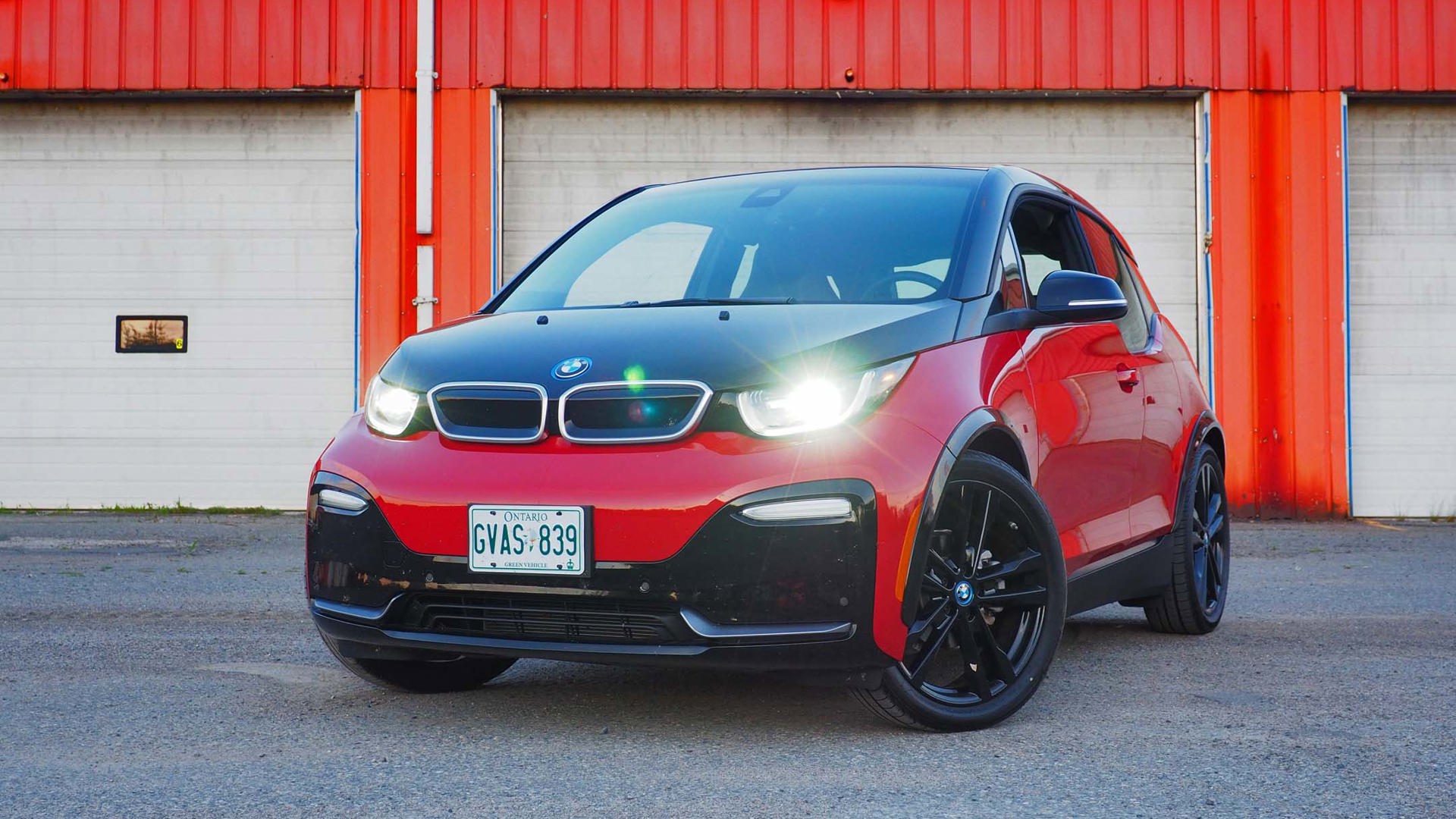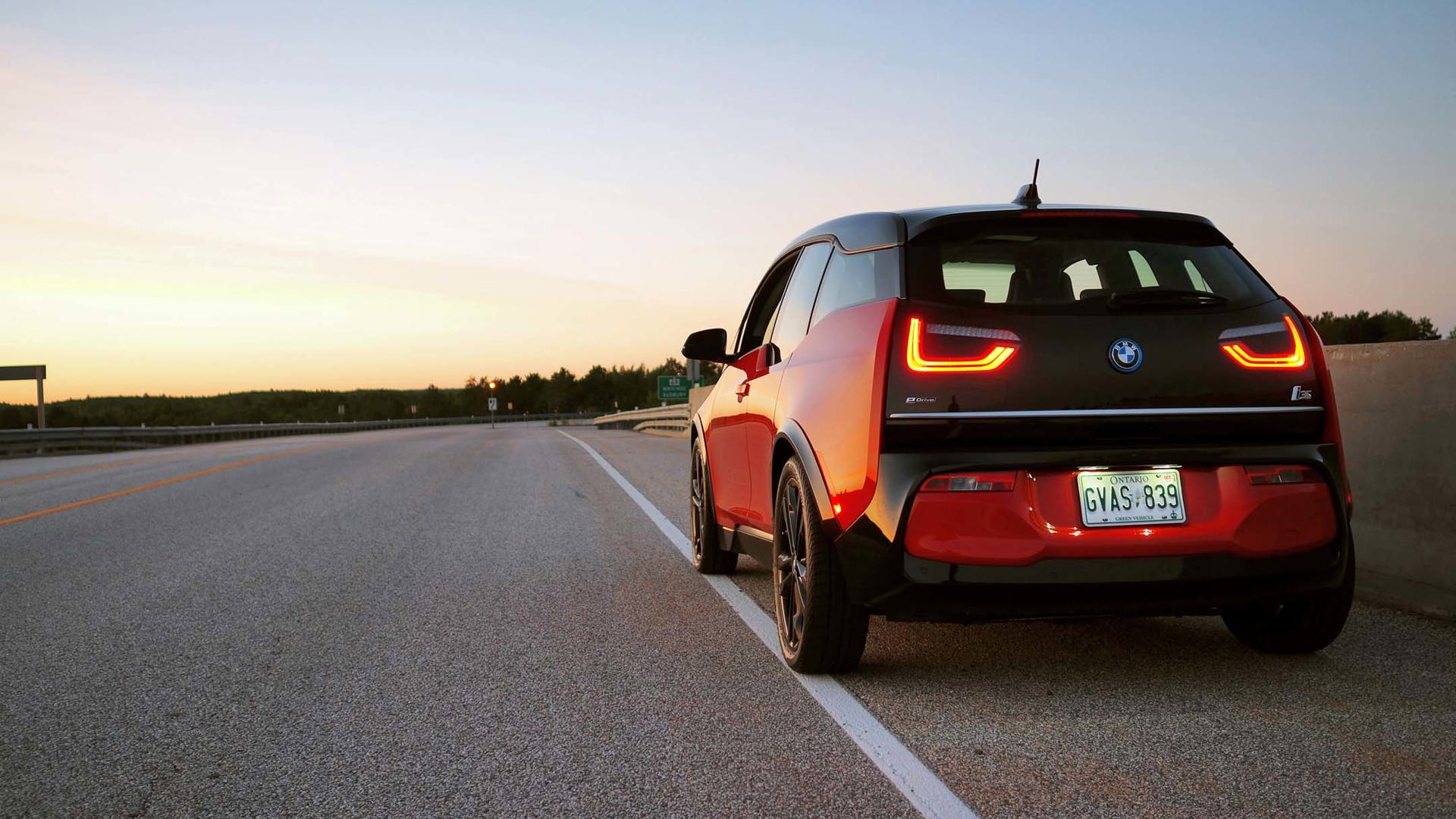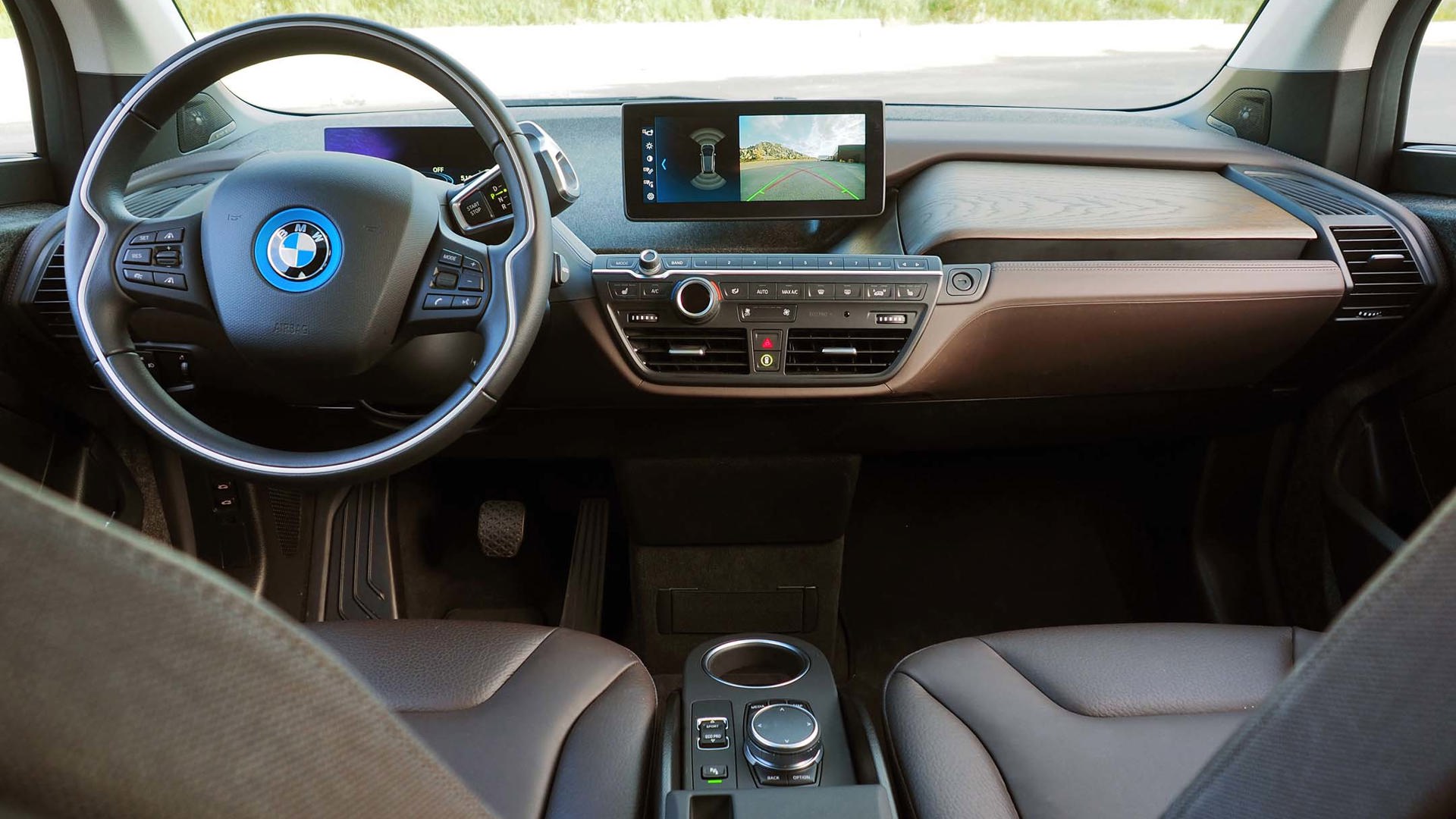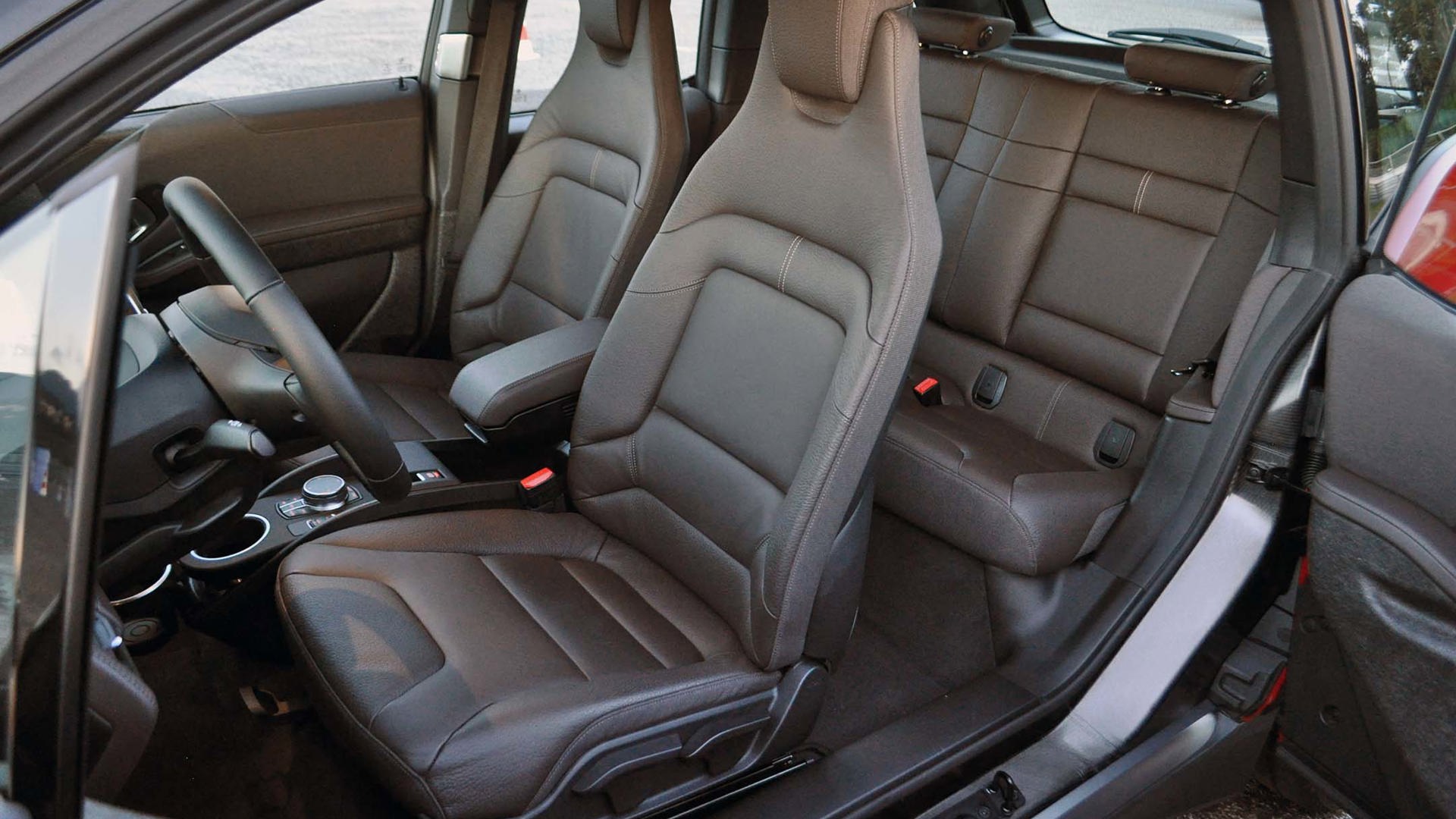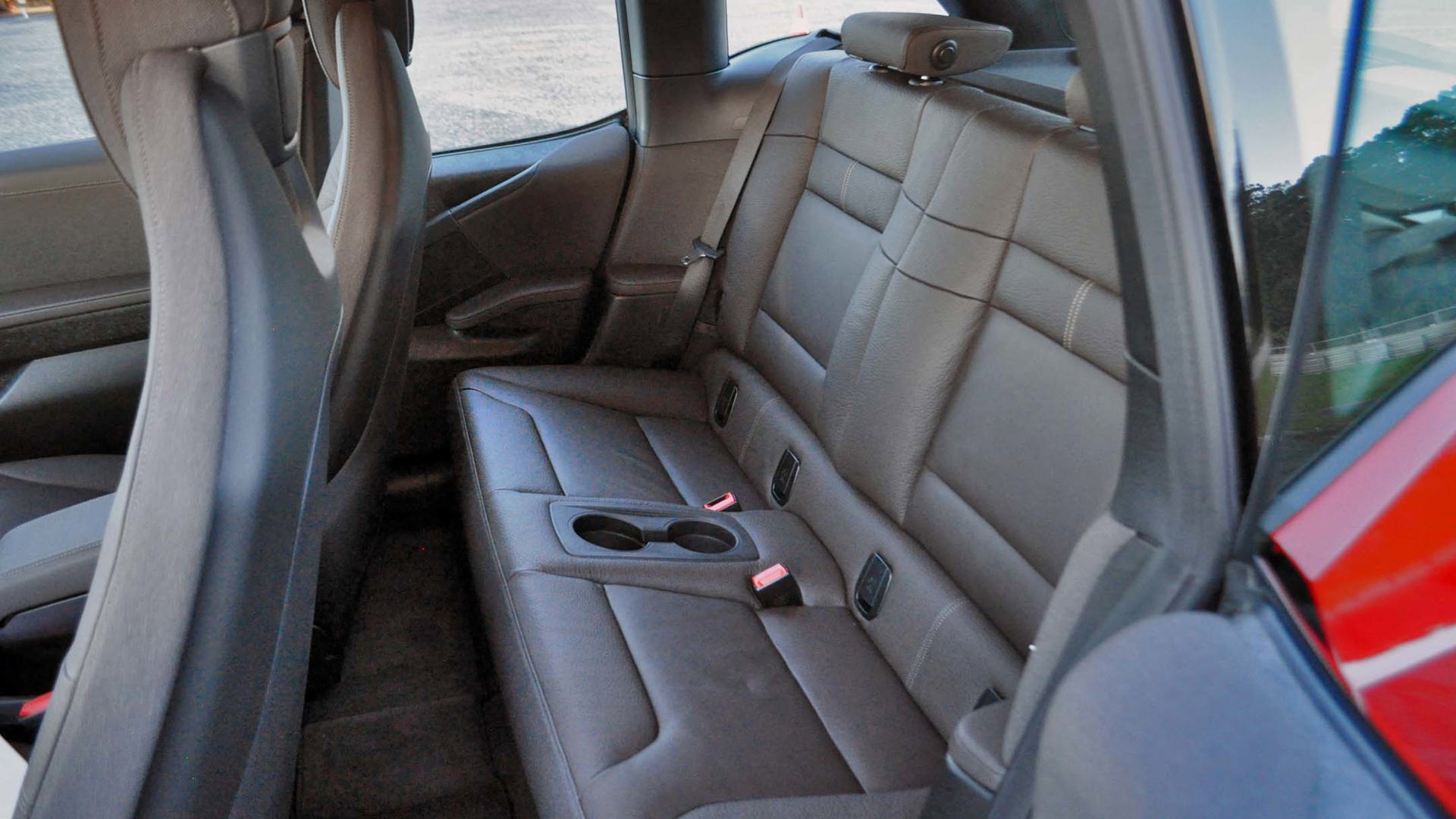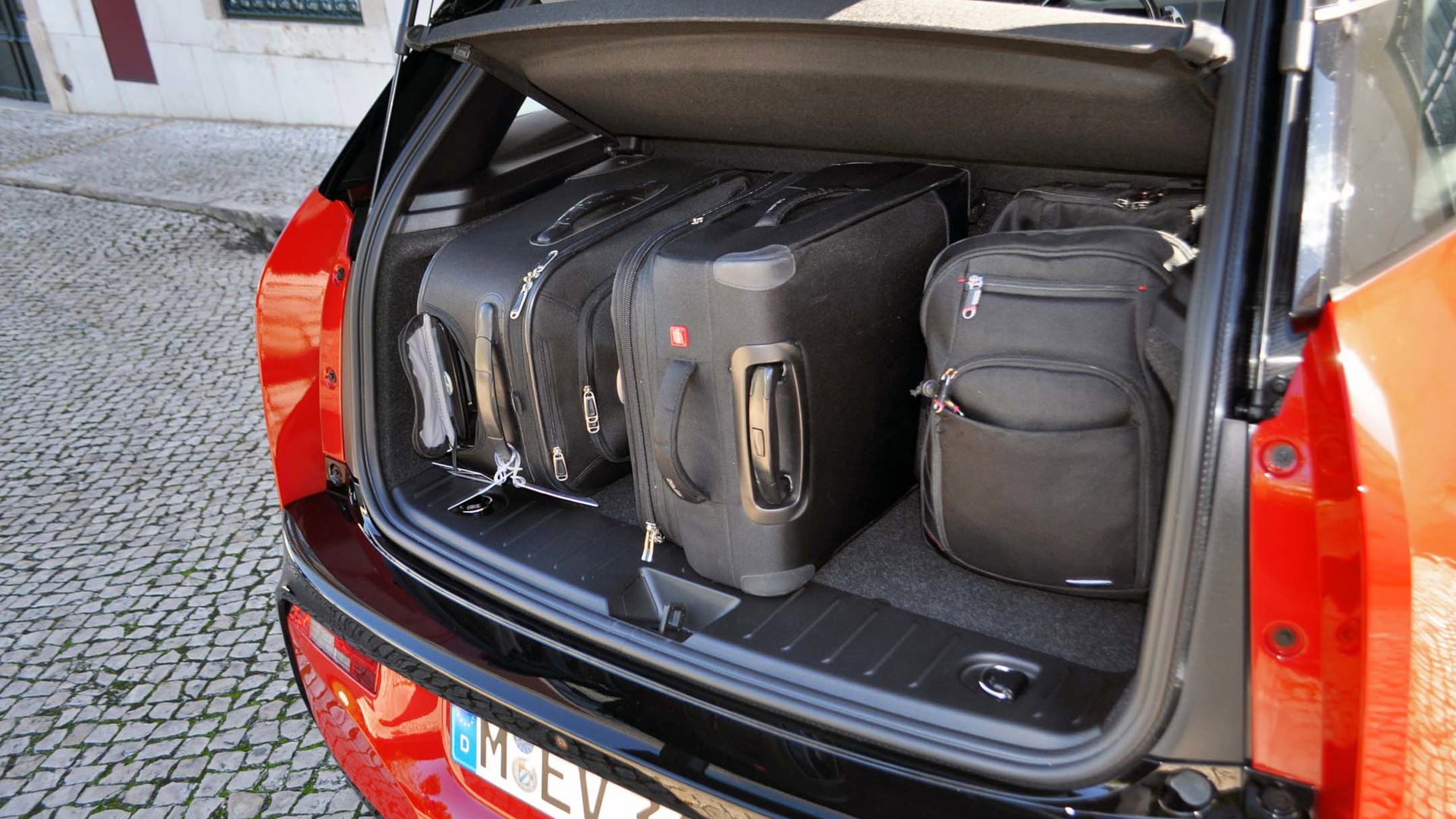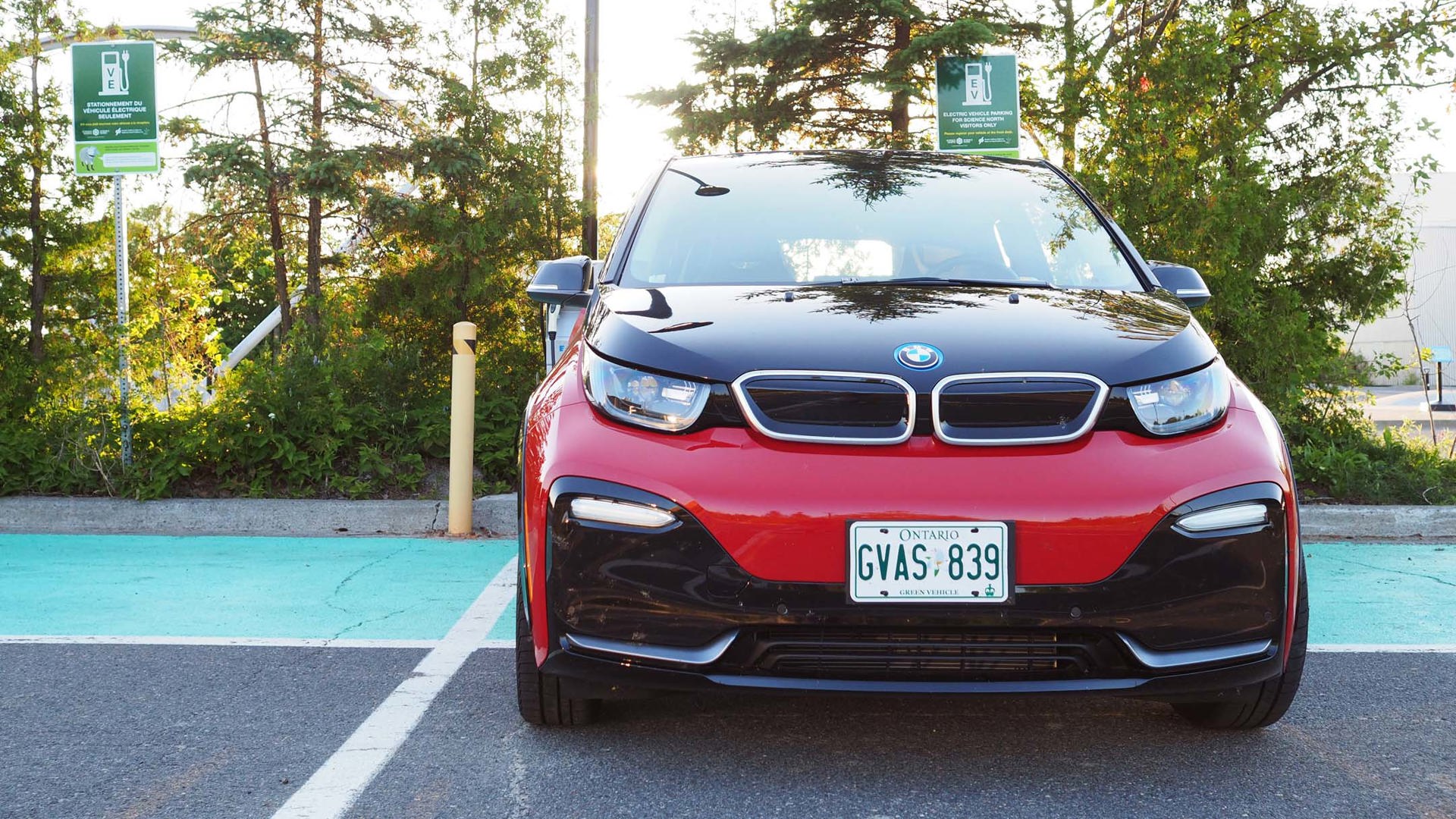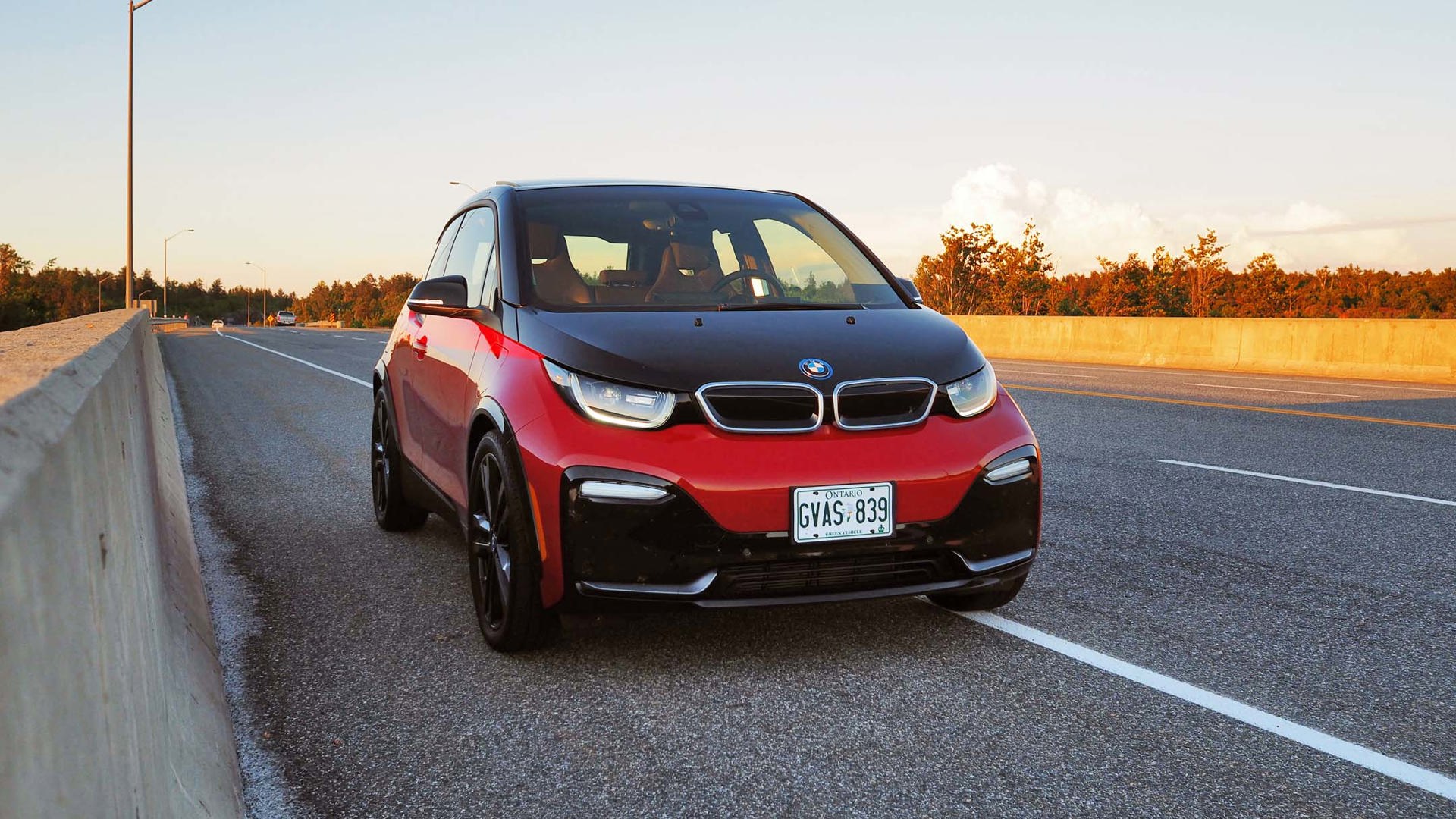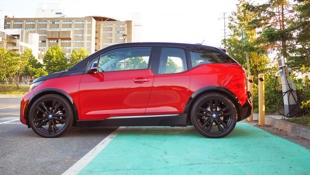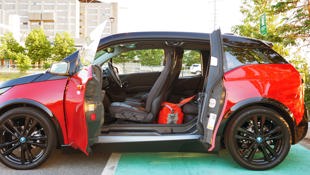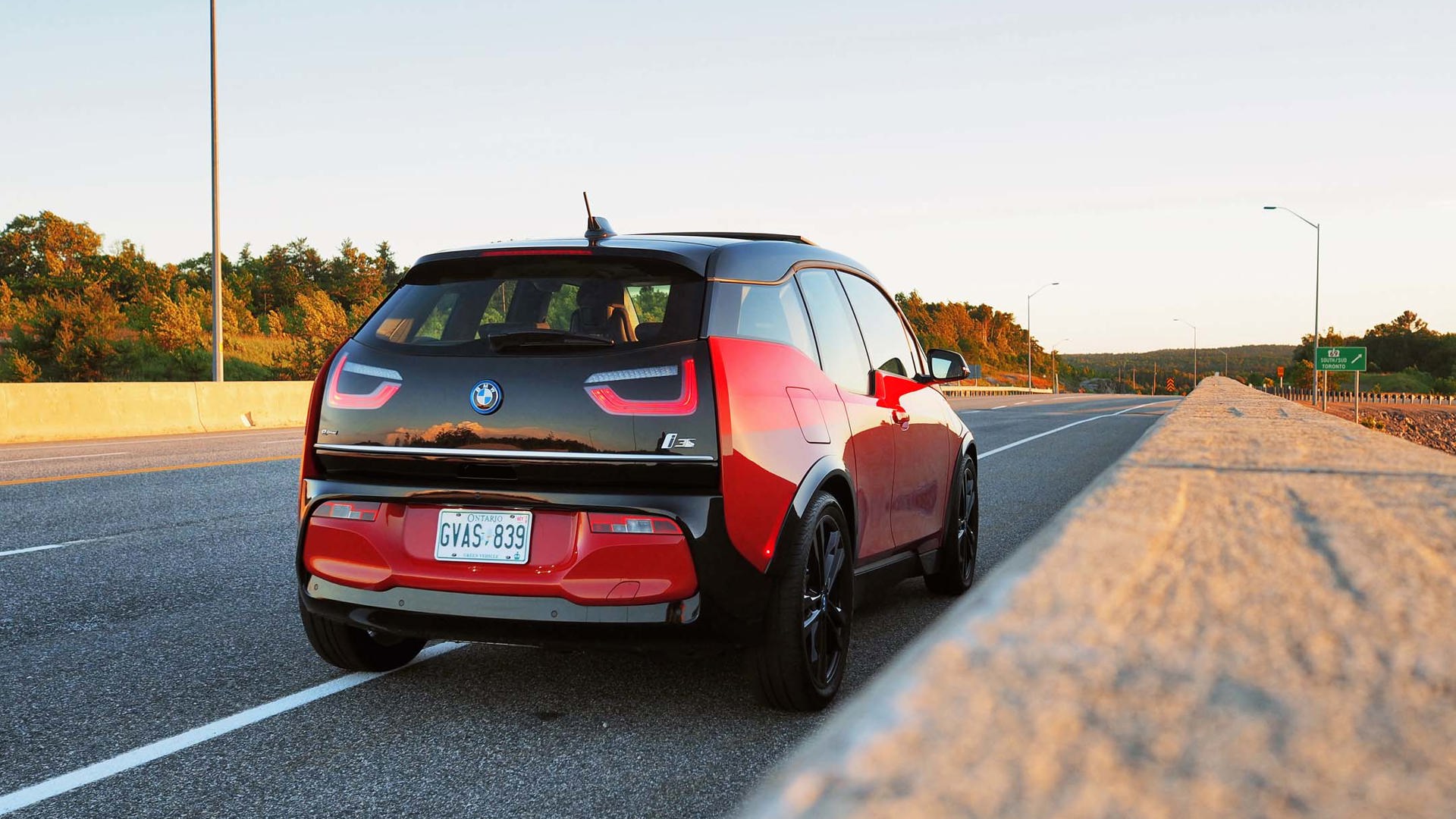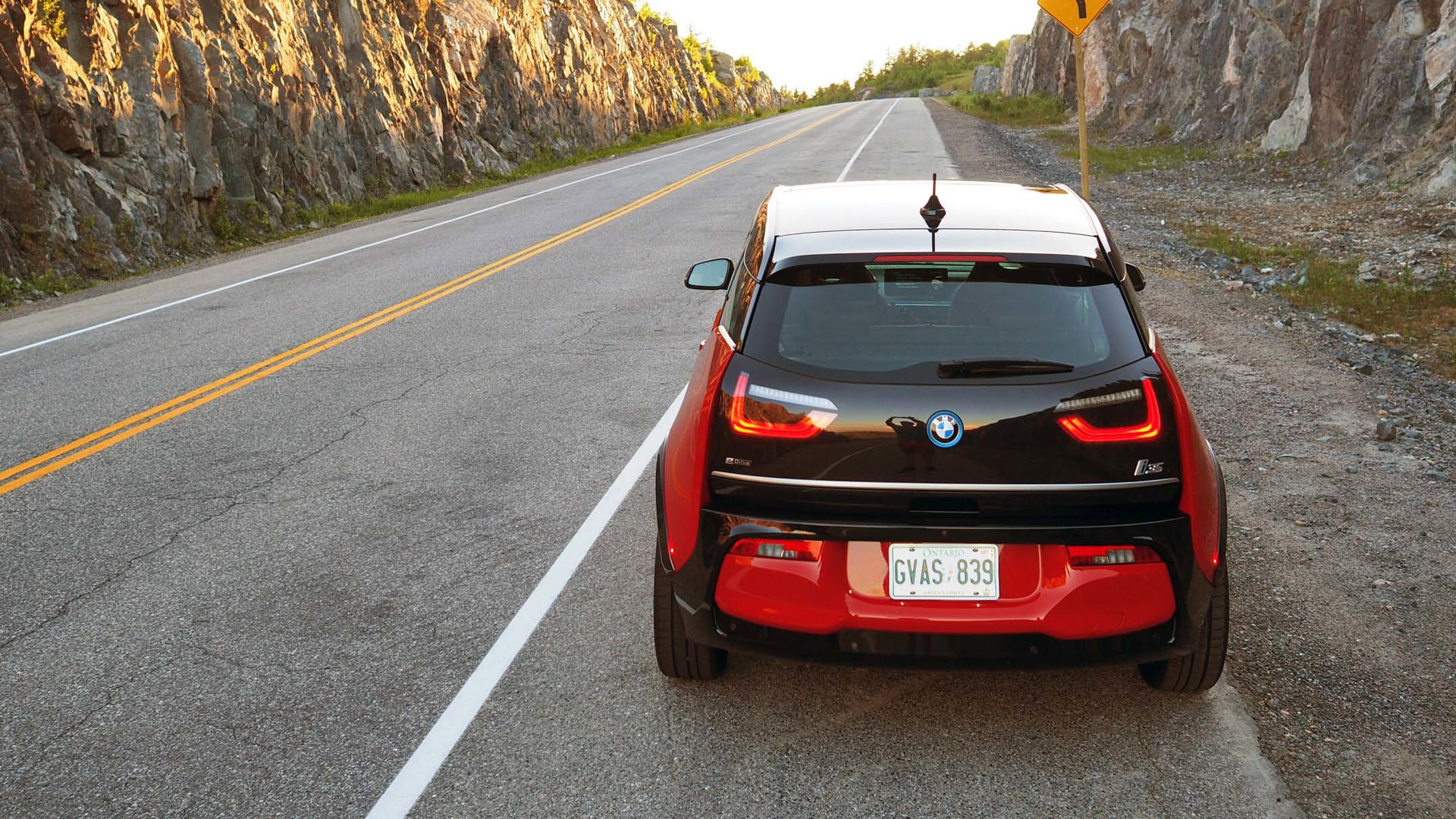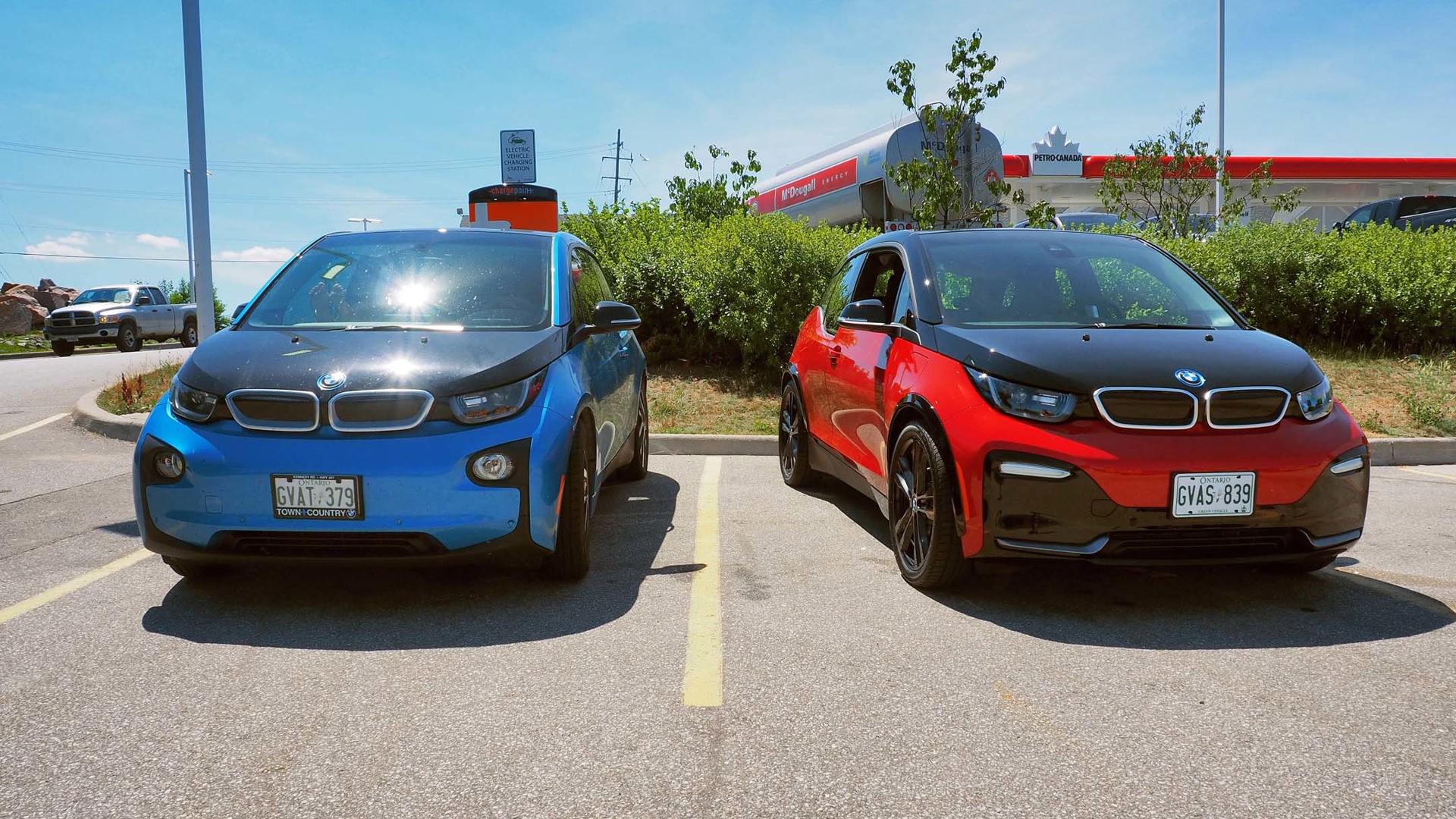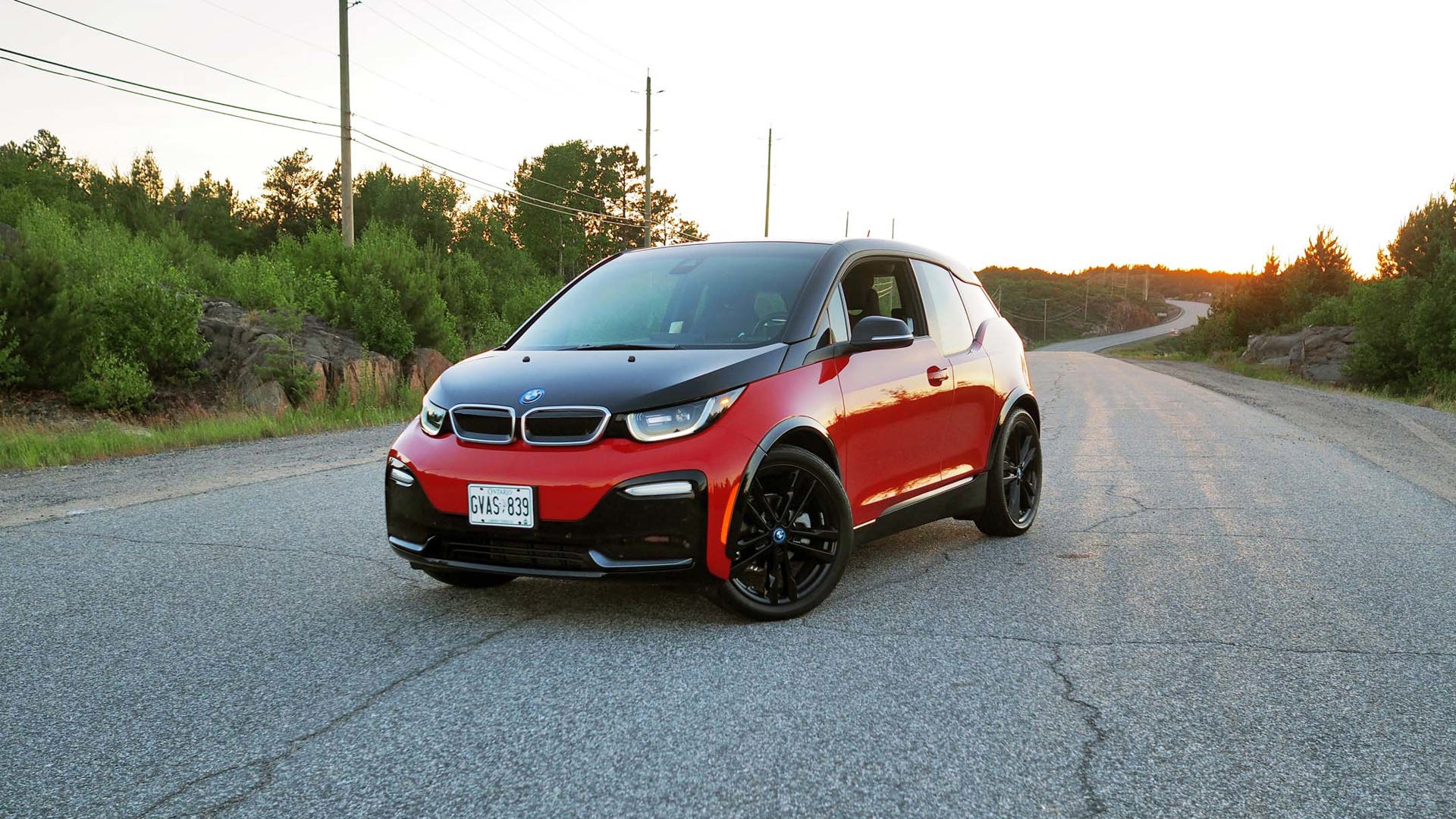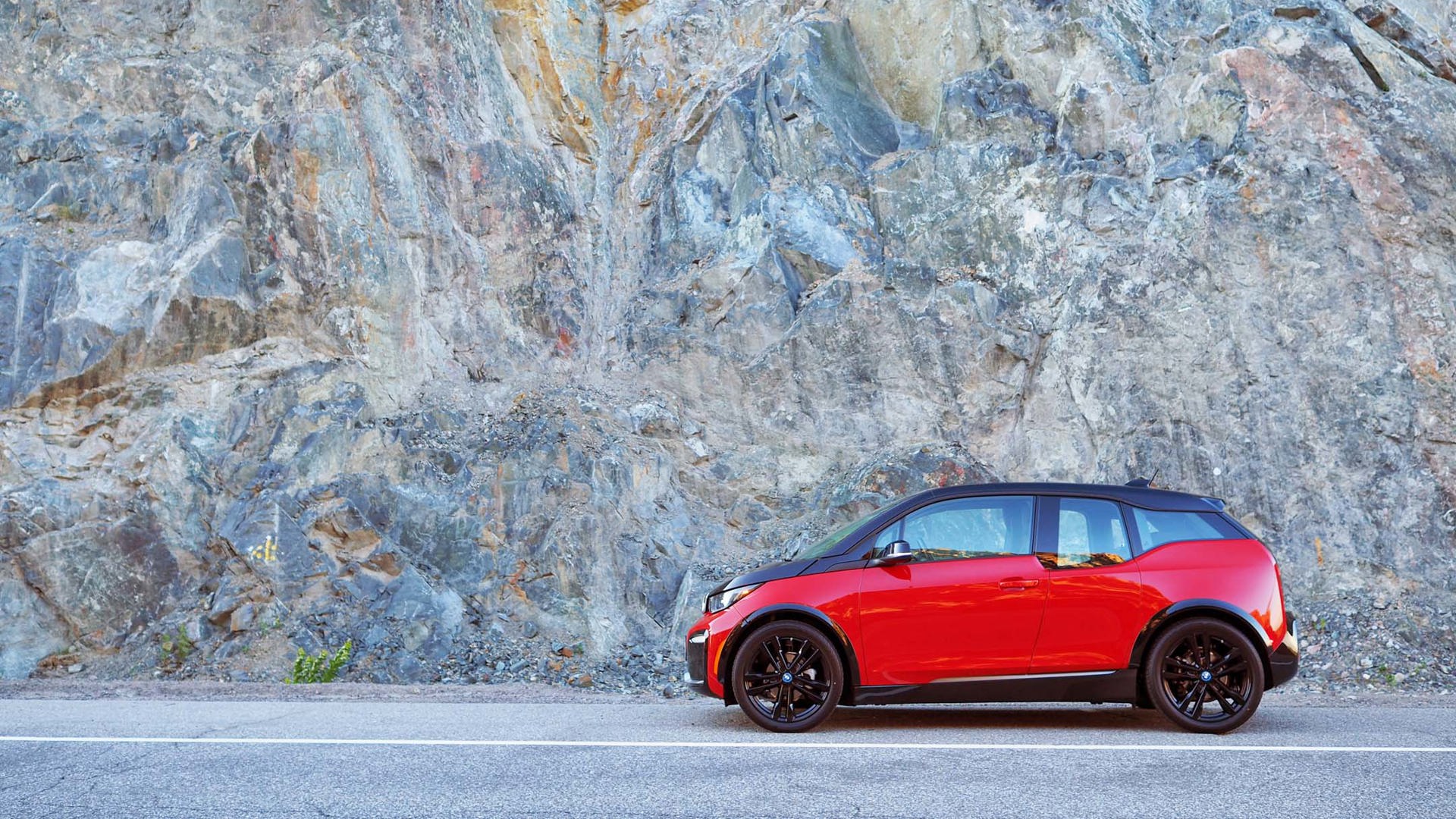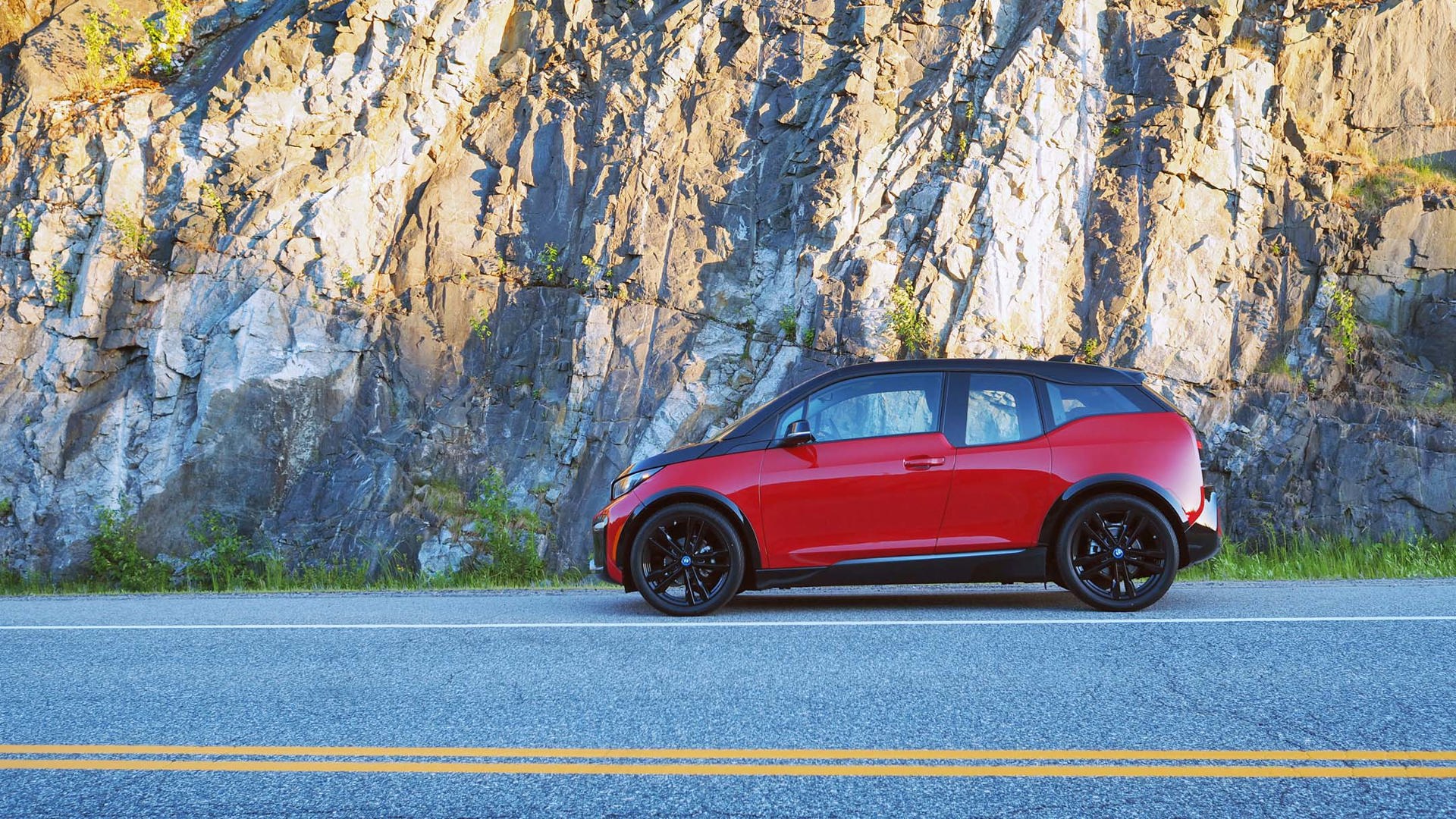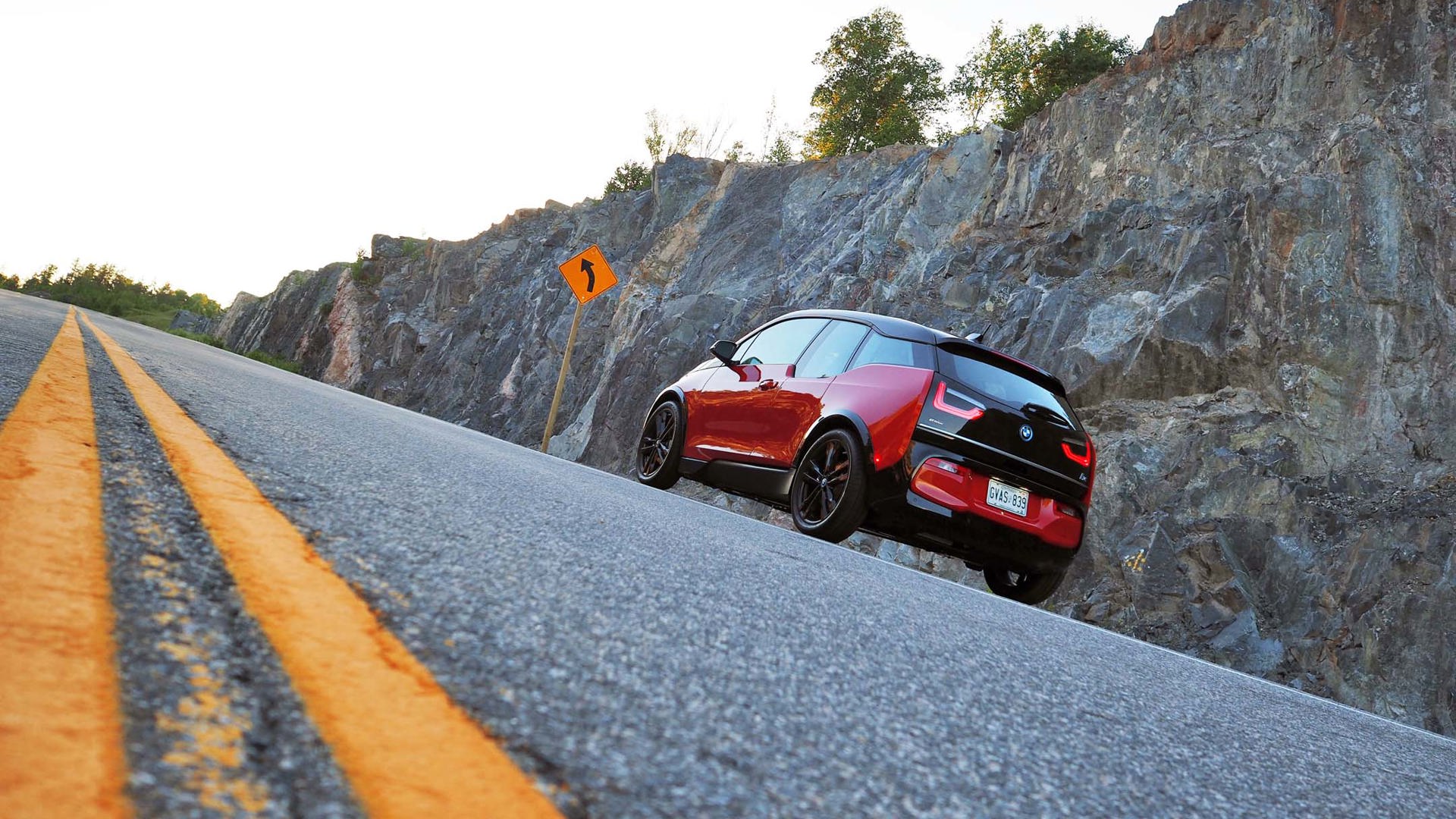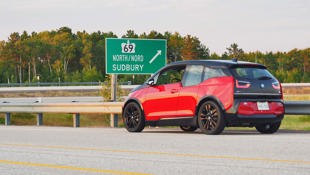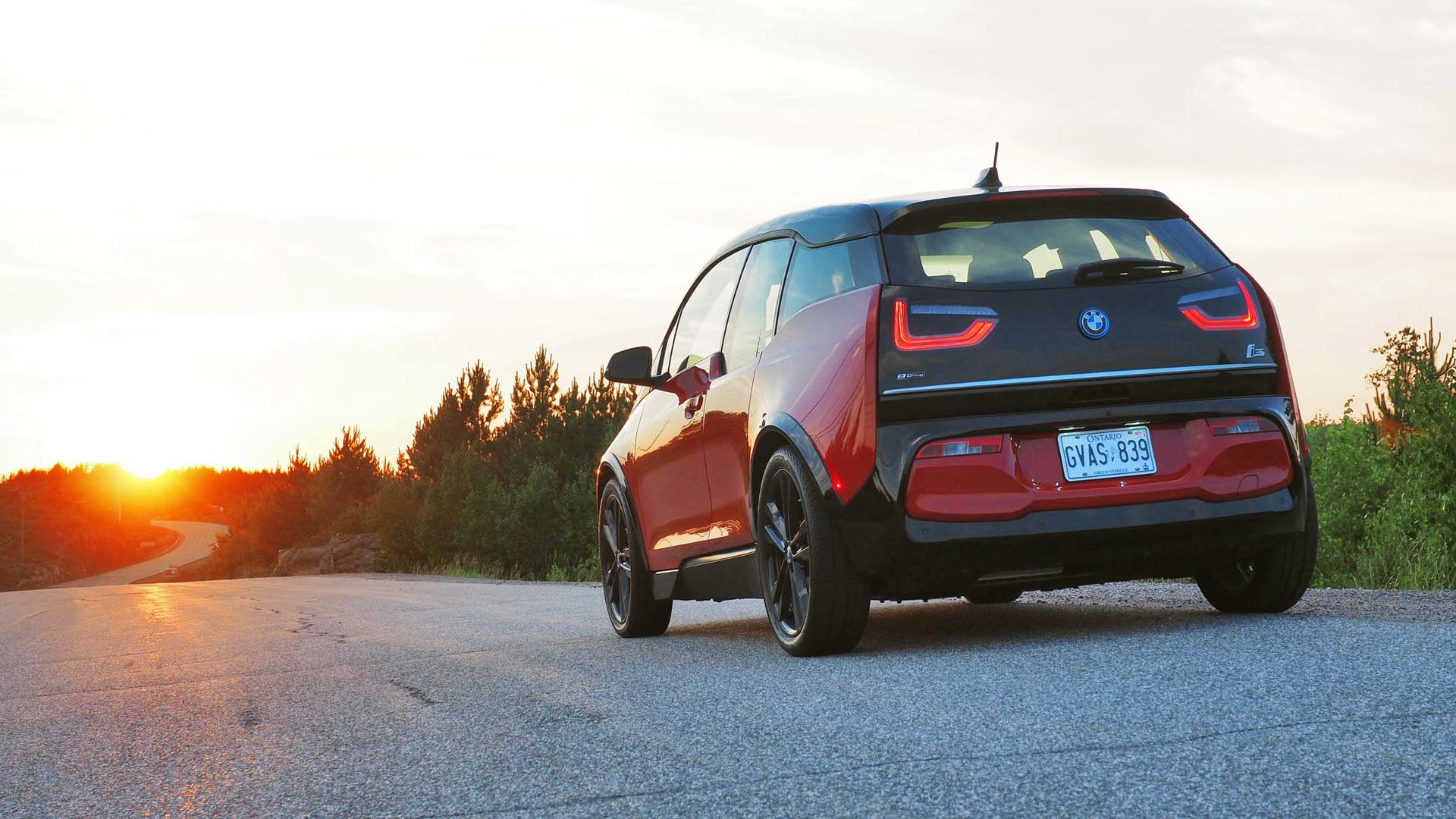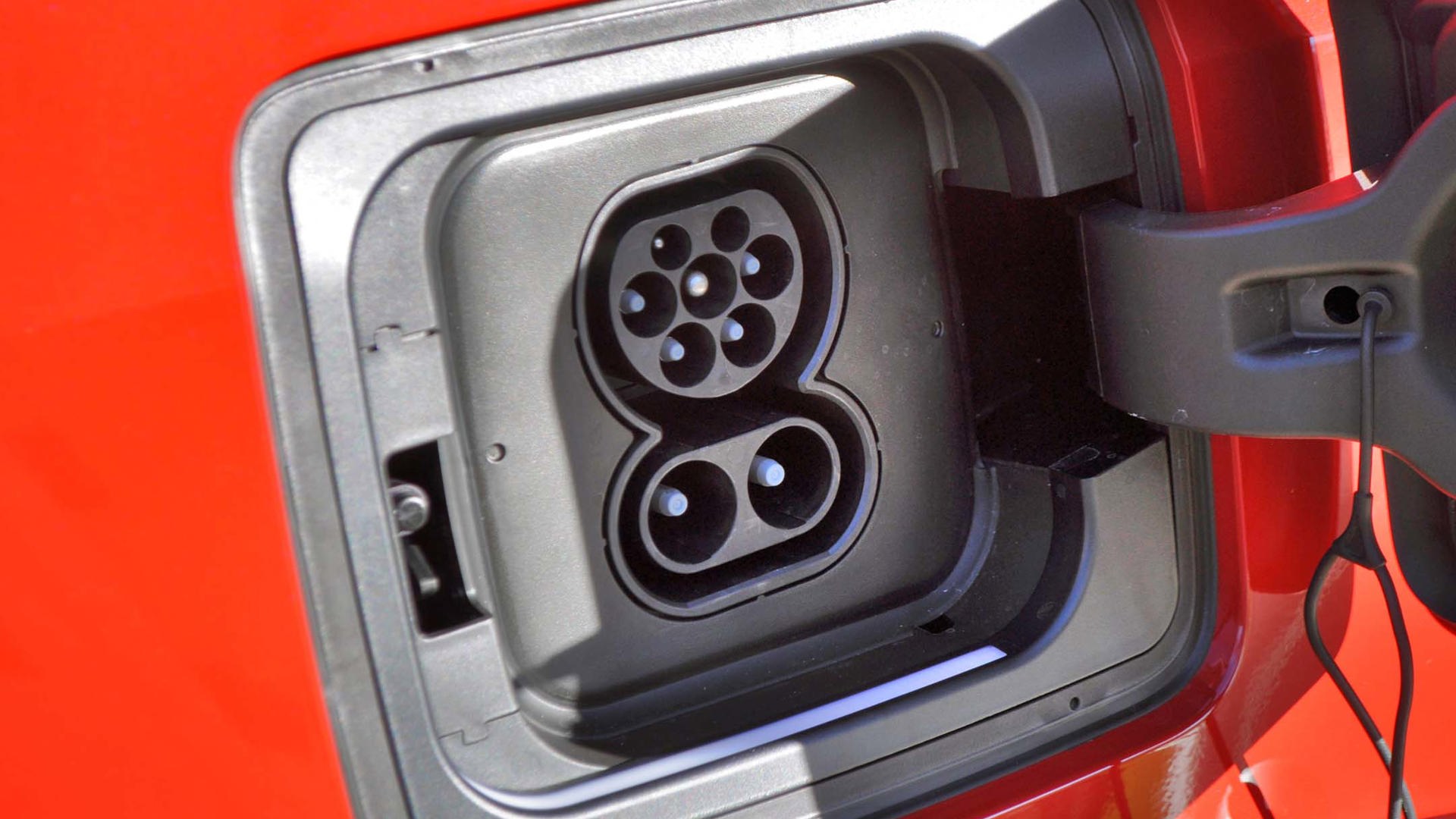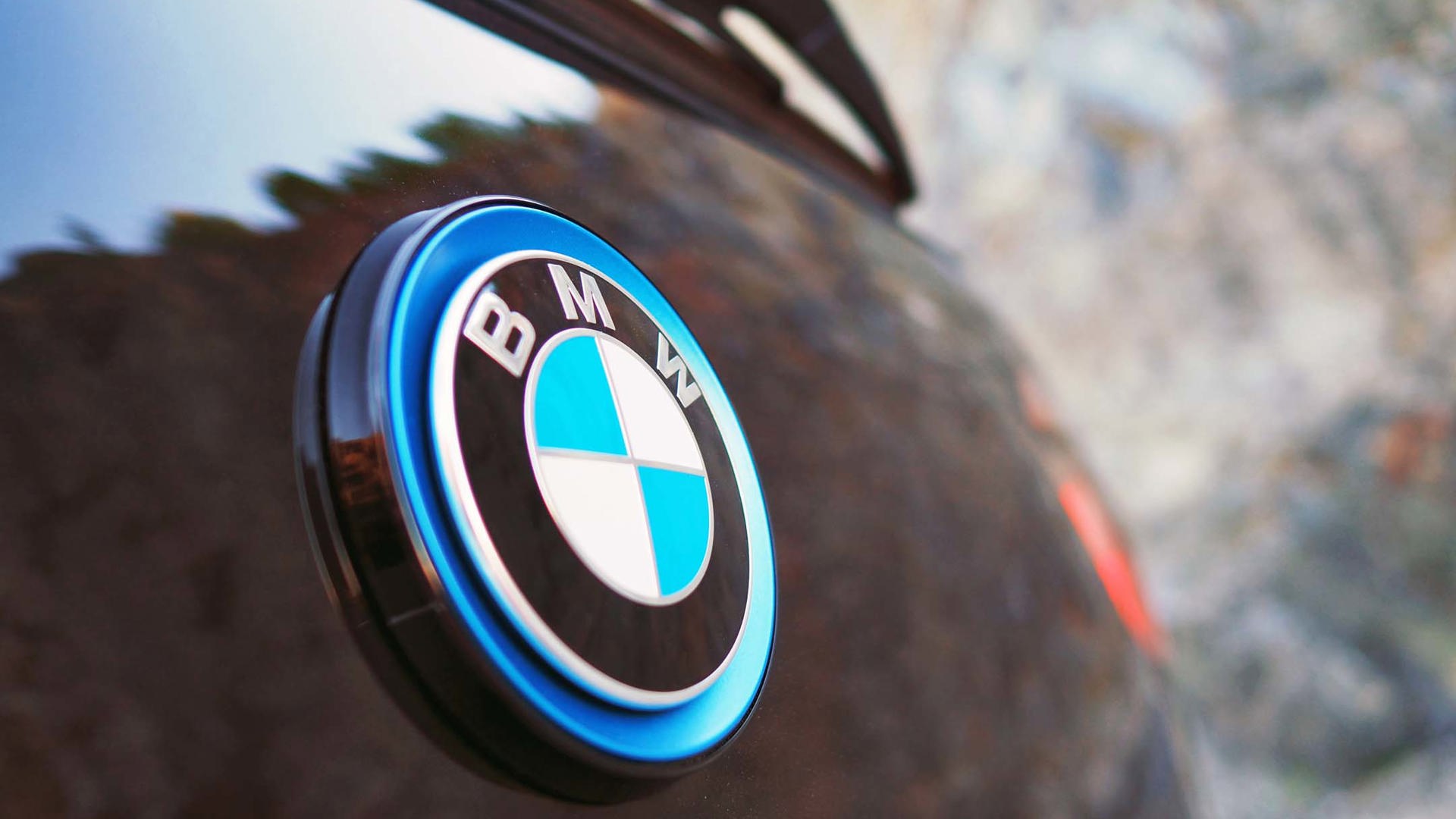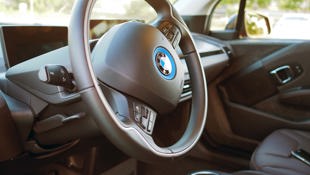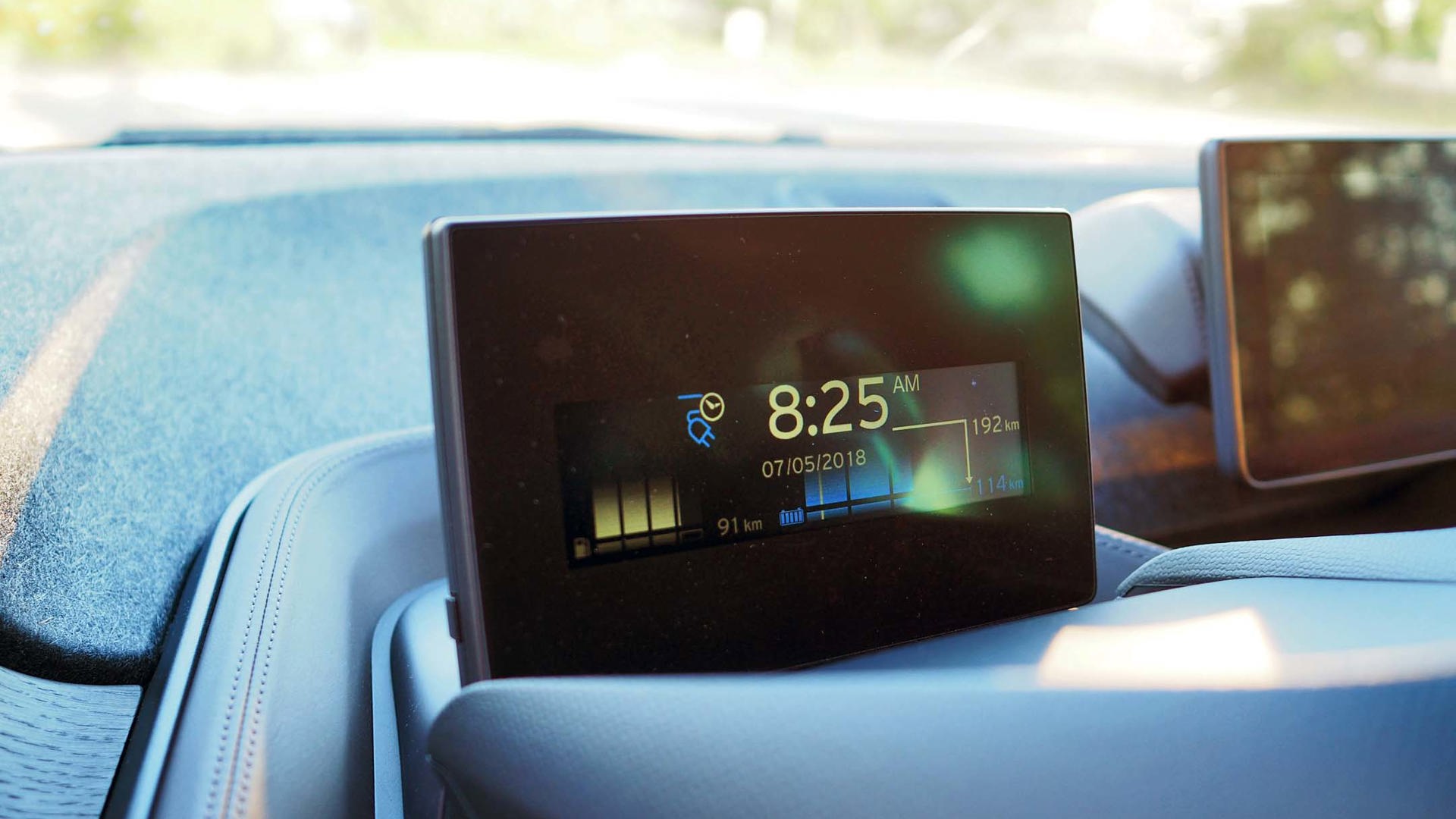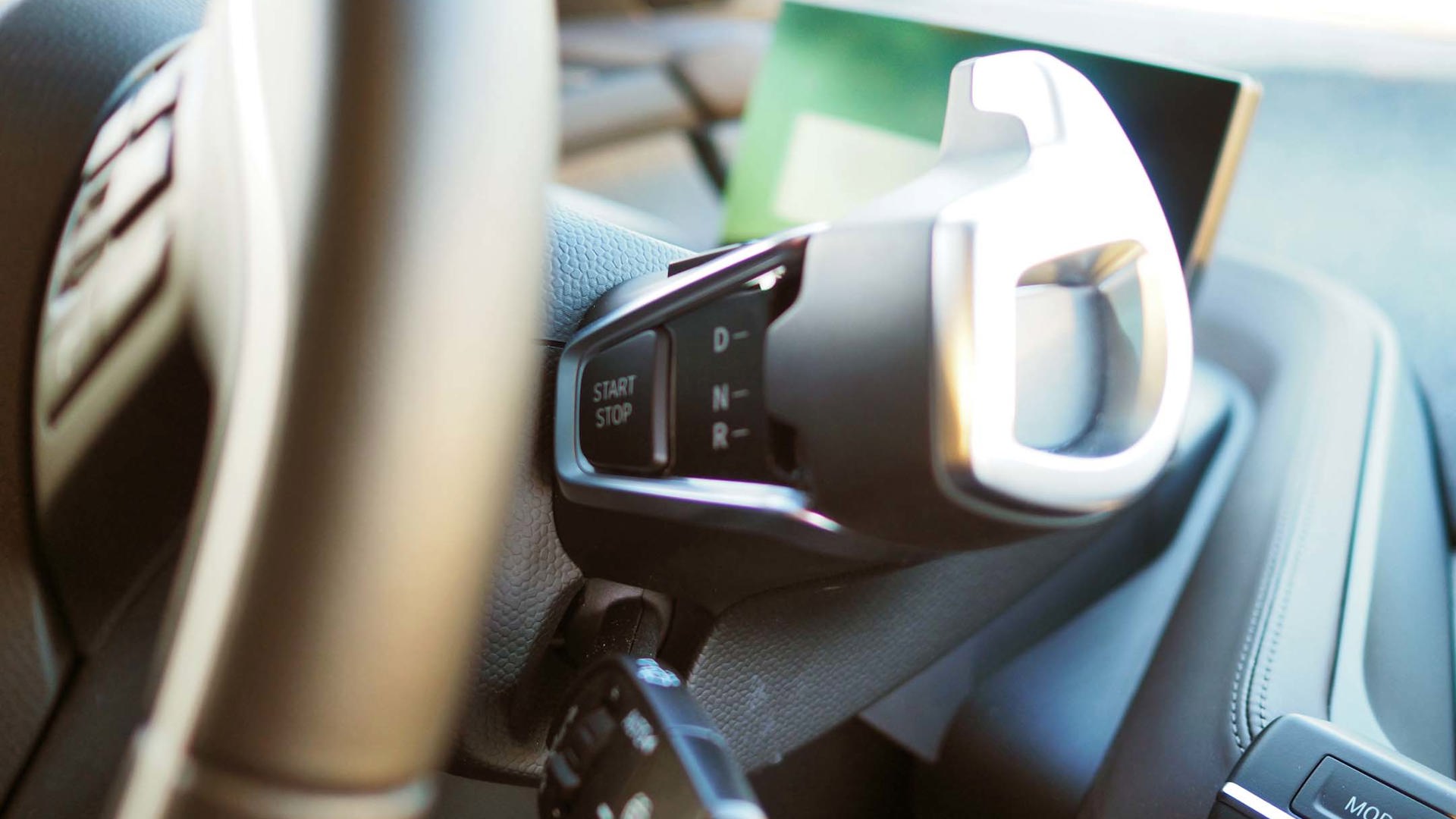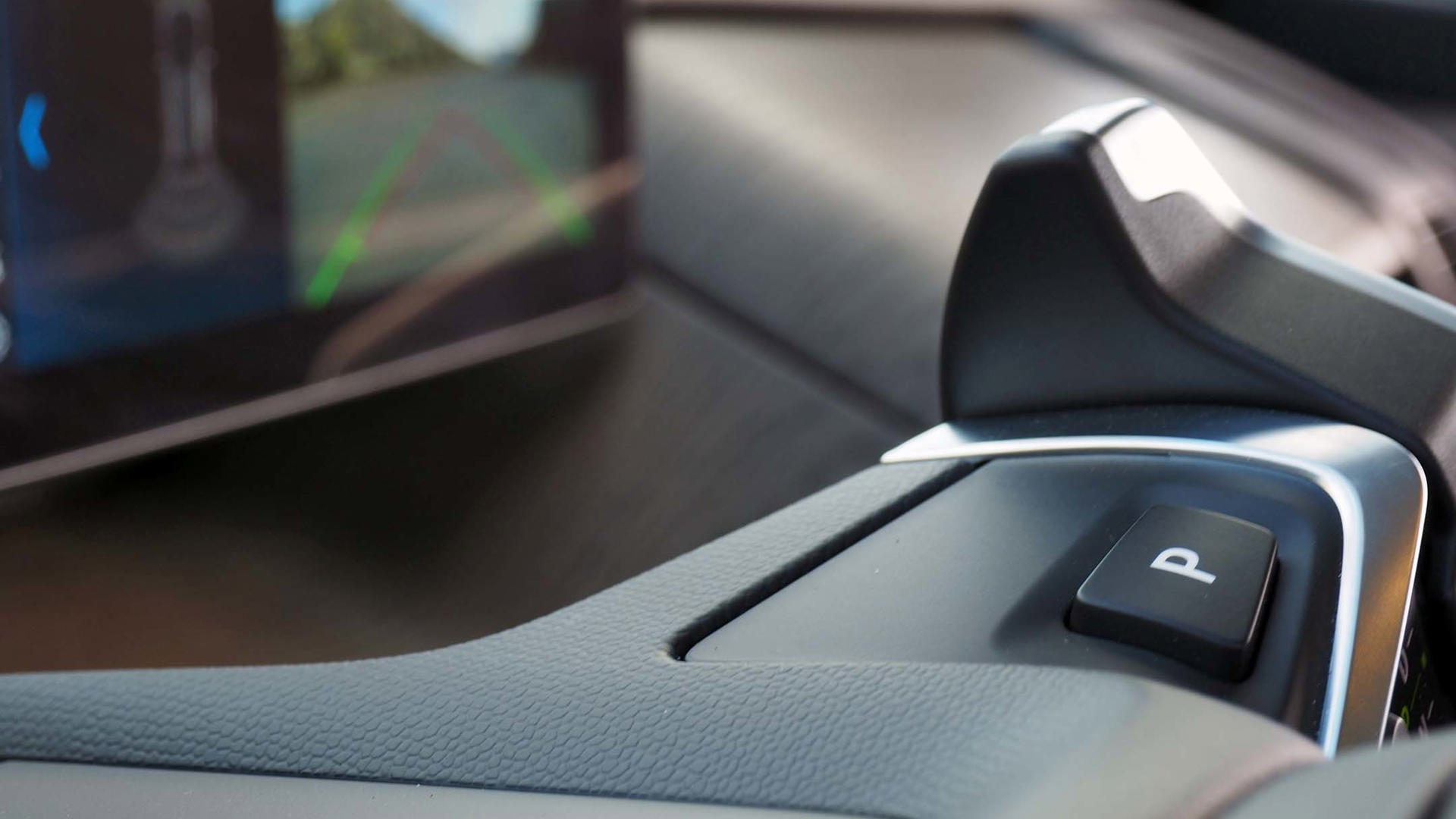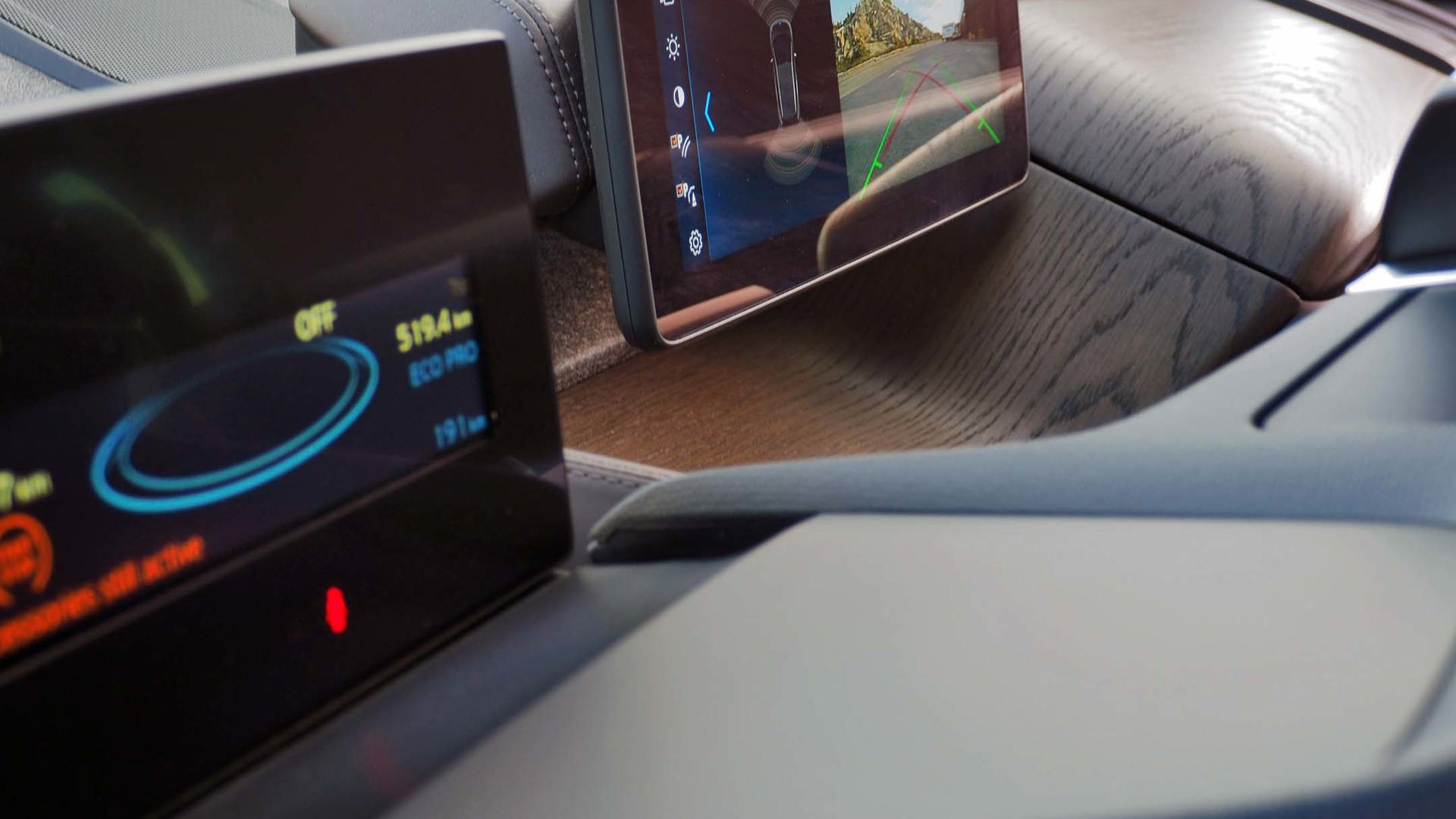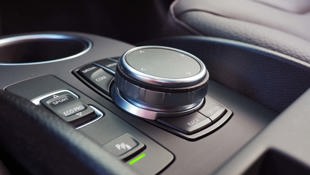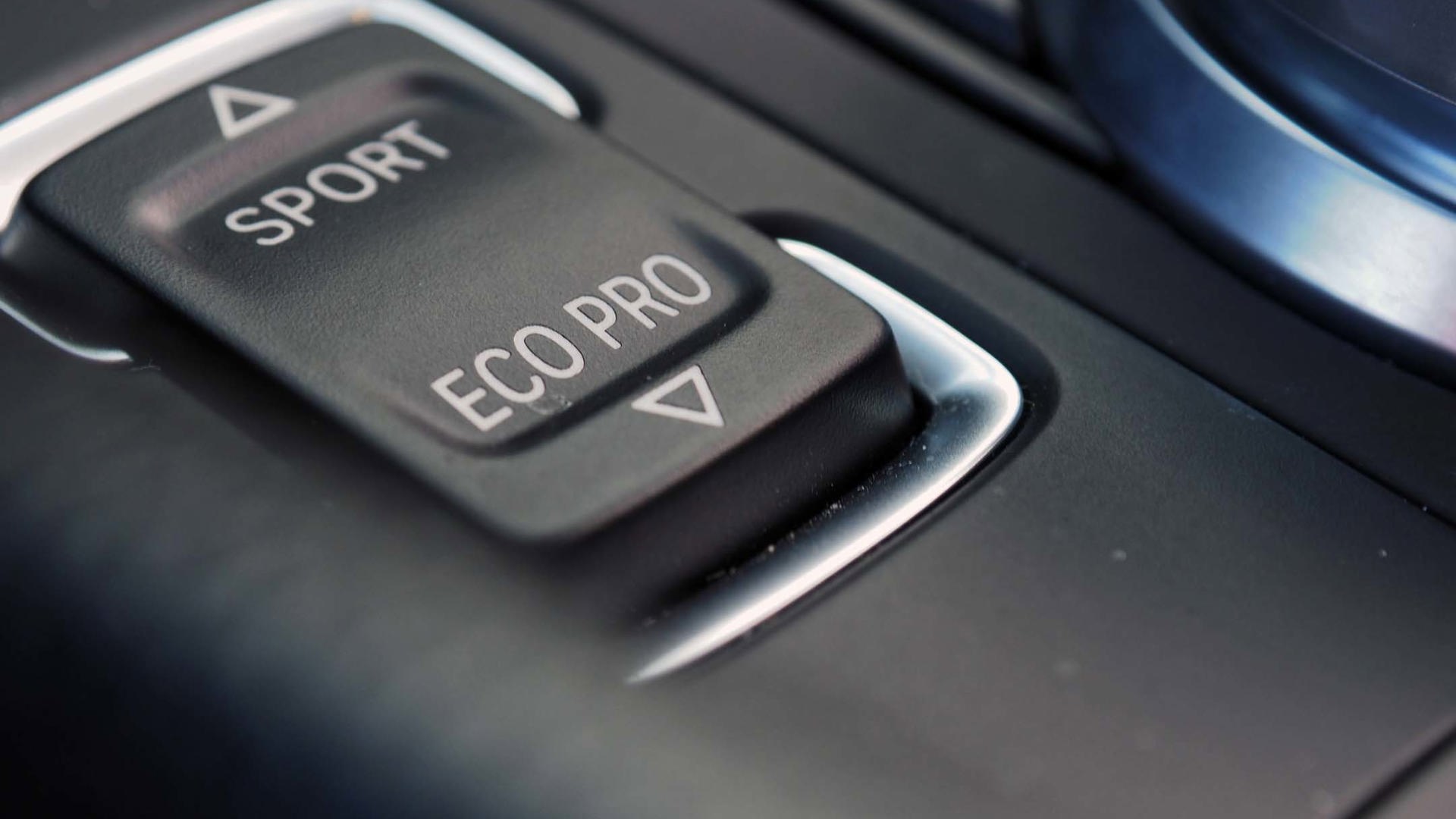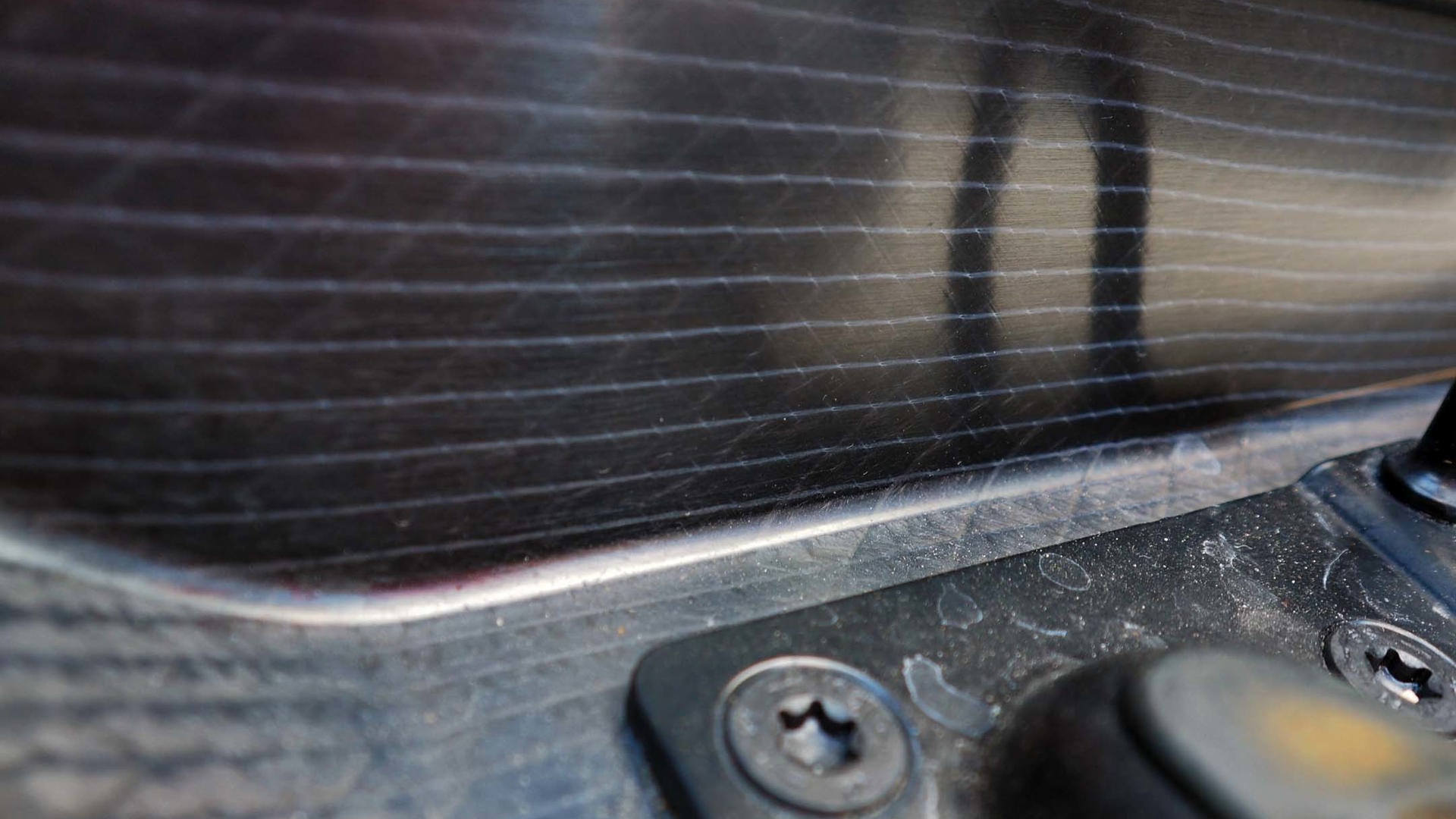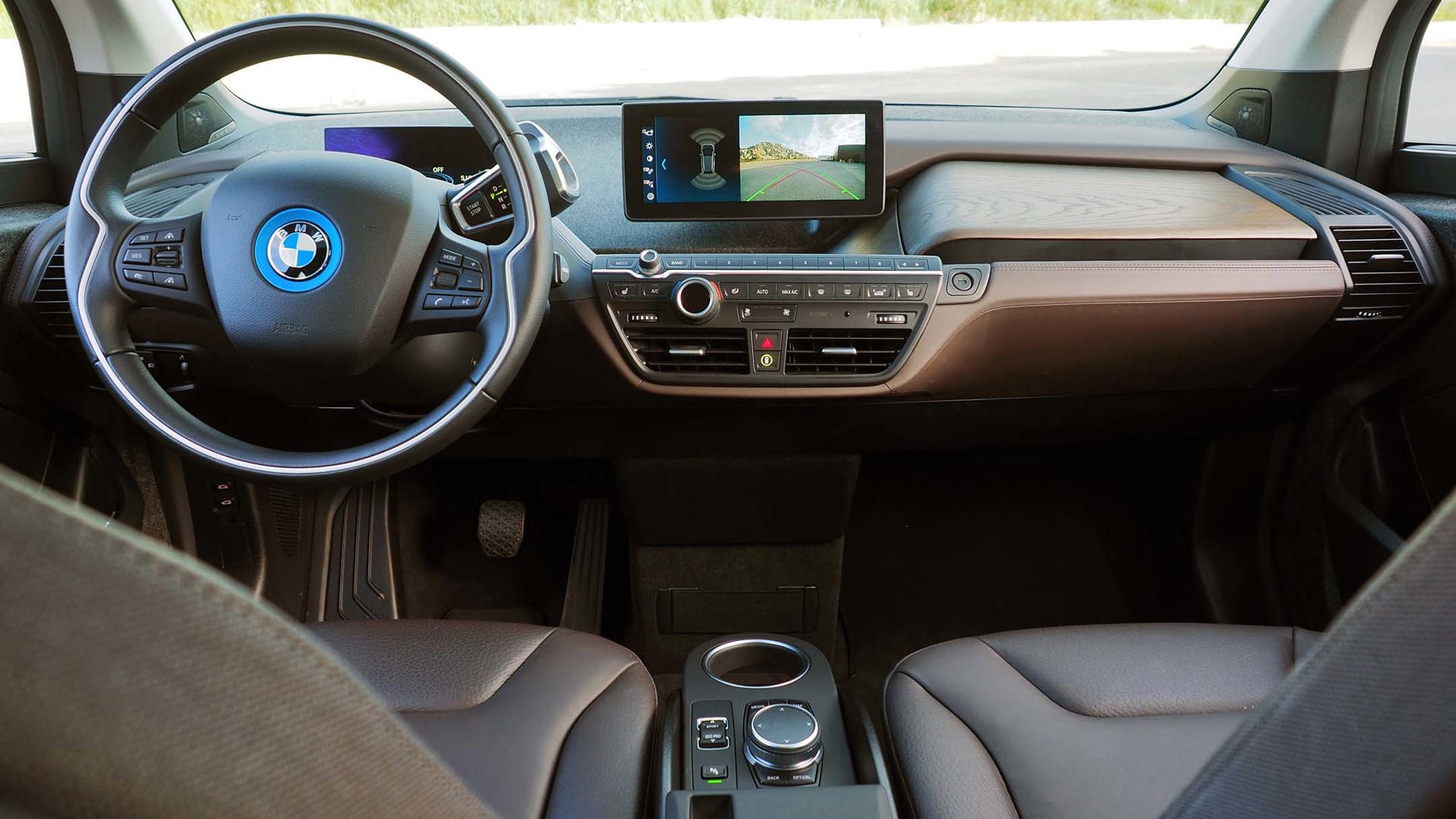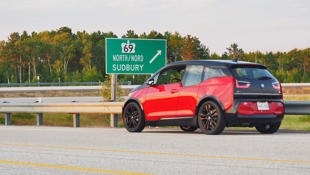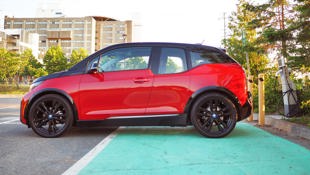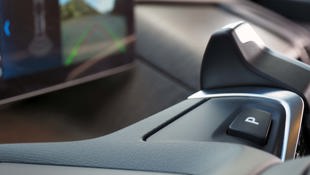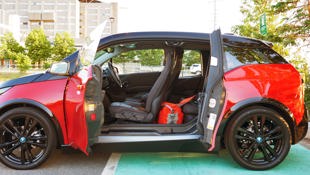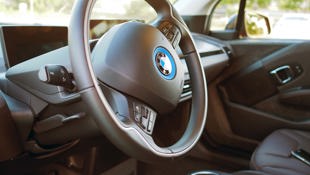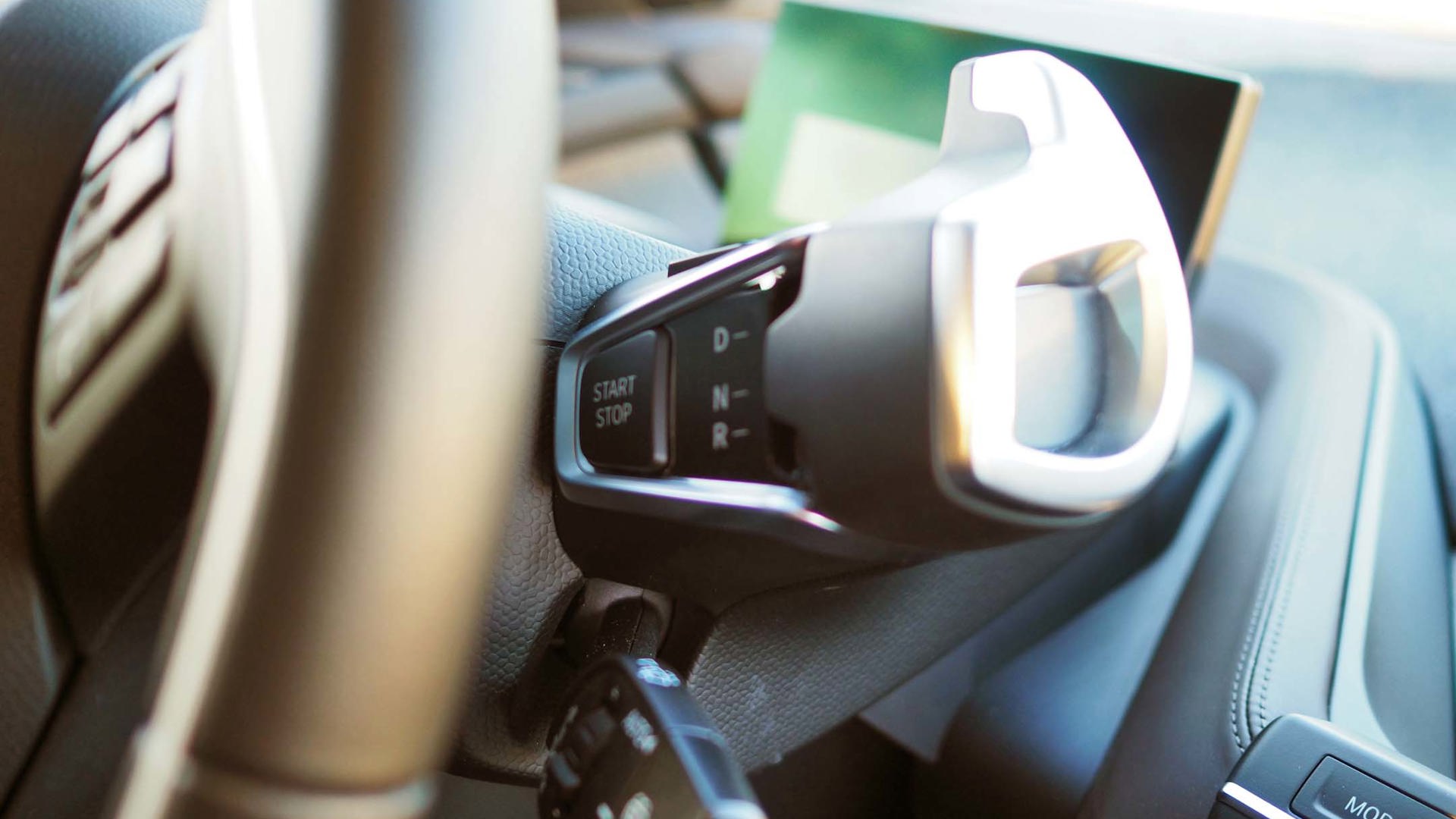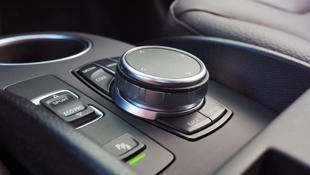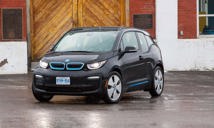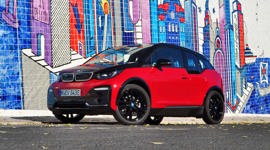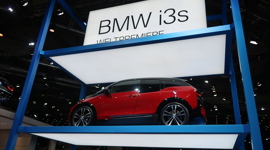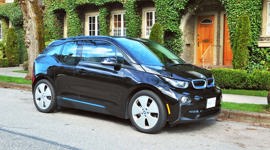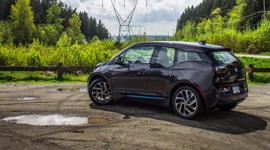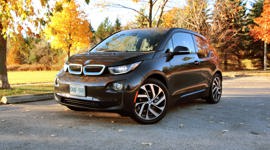 AutoTrader SCORE
AutoTrader SCORE
-
STYLING7/10
-
Safety8/10
-
PRACTICALITY8/10
-
USER-FRIENDLINESS7/10
-
FEATURES8/10
-
POWER9/10
-
COMFORT7/10
-
DRIVING FEEL9/10
-
FUEL ECONOMY10/10
-
VALUE7/10
It cost me ten bucks to drive the BMW i3s from the Greater Toronto Area to Sudbury, Ontario.
A tricky machine (and experience) to sum up.
That’s 390 clicks, door to door – starting in Central Ontario and ending at home some four hours north. It costs at least twice that amount to fuel even a very efficient gasoline car for the same drive.
In one way, then, the BMW i3s saves you money, which basically makes you a genius.
I must share a thing before we continue: I’ve been a car reviewer for 15 years, but I’m not up on electric vehicles (EVs). I don’t follow them. I don’t pay much attention to them, because I virtually never drive them.
That’s because, for much of my career, EVs simply couldn’t effectively make the drive from Toronto to Sudbury required for my review.
Range was insufficient, as was recharging infrastructure en route. I’d pass a dozen gas stations heading home, but no chargers. Theoretically, I’d leave Toronto and be dead on the roadside somewhere between Port Severn and Parry Sound. Beautiful spot, but less so if you’re stranded and in need of electrons, with no plug nearby.
There’s also the other thing: given the time it can take to fully juice an EV’s battery, it’d be a long drive home broken up by one or more lengthy stops to recharge. And I like getting where I’m going a great deal more than I like making lengthy stops on the way.
Lately, electric car range has been improving, as has the charging infrastructure connecting Central Ontario to areas further north.
In the aforementioned 2018 BMW i3s REX, I made my maiden electric car voyage home last week. I’ll share some of what I learned as an EV rookie below. Note that the following reflects my specific experience making this specific drive with this specific car. Other EVs have different ranges and figures. Many EVs are available today, and total driving range is but one of many reasons you choose the one you choose.
Living with an electric vehicle
Let’s begin.
You plug an EV into a charger whenever possible, and every stop counts. You plan your trip around charging station locations and stop wherever feasible, even if briefly. As it is with a gas car, always be aware of how far you can go, and the distance to the next place you can fill up (recharge). Also remember that gas stations are much more abundant than charging stations in many locales, mine included.
EV chargers come in three levels (simply, 1, 2, and 3) with each level having more power than the last. The higher number, the greater the charger’s output, and the faster the EV battery will fill. Electric cars have big batteries which can take a long time to charge. Or not. It all depends on where you plug in.
Level 1 charging involves plugging the vehicle into a household outlet, like the one you use for your Christmas lights. At Level 1, charging the big battery in the i3s from empty takes well over a day. It works, but it’s slow. Level 1 charging is ideal for keeping the battery topped off if you don’t run it down much during a day – for instance, if you do 30 kilometres of running around one day and charge overnight on Level 1, the battery will be full by morning, no problem. Repeat as needed.
But Level 2 charging is better, because Level 2 chargers run at 240 volts, and are much faster. Out and about, you’ll find Level 2 chargers at restaurants, malls, various parking lots, car dealerships, movie theatres, science centres, and more. Or, install one at home, if you like. Plug into a Level 2 charger for an hour, and you’ll increase the battery charge by a few dozen percent. For instance, Sudbury’s Science North science centre has free Level 2 chargers. Arrive with an empty battery, take the kids in for an afternoon, and you’ll return to a fully charged battery, or close to it.
Level 3 chargers are your best pal if you’re on a long trip, since they run 480 direct-current volts that drive power into the battery like nobody’s business. On Level 3, some EV’s can obtain a 70 or 80 percent boost in charge in about 30 minutes. But the more full the battery is, the slower it charges. The last little bit always takes the longest.
On two occasions, I plugged the i3s into a Level 3 charger for about 75 minutes, bringing the battery from almost empty to virtually full. A full battery in this particular model is good for about 180 kilometres of electric driving on flat terrain, on a hot day, with the air conditioning on, doing about 110 km/h.
Note that some charging stations are free, and others are not.
Ikea are good guys, so they have free EV charging, including free Level 3 stations. Stop at Ikea on your drive if you can. You can juice your EV for free while you wait and shop and eat cheap meatballs and contemplate oddly named shelving.
A particular Level 3 charger I visited twice on my test drive was a pay-to-use station in Port Severn. It cost me $8 of the $10 I spent on the trip home, and a similar amount on my drive to return the car a week later.
To use a pay station, you may tap your credit card or an app-enabled smartphone onto the station to activate it. See if the charger you’ll use requires payment, and how to make said payment, before you set off. This specific pay station required me to use a phone app, linked to my credit card. I hadn’t set this up beforehand, but I got it up and running on the spot in less than two minutes.
To pass the roughly 75-minute wait for a full recharge, I had a coffee, did some work on my laptop, ate some carrot sticks, and took a walk to take some photos of the surrounding area.
Also, remember that you needn’t totally charge the battery. In the same way that you can put 10 bucks of fuel in an empty gas tank or totally fill it, you can charge an EV battery a little, all the way, or anywhere in between. In the i3s, the battery level is always displayed alongside the corresponding driving range possible on that amount of charge. To save time charging, you may only need to plug in for, say, 20 minutes, to be able to get to the next charger at your destination.
This may all sound a little complicated, but it’s totally not – and the BMW i3s helps make it easy. Right on the navigation screen, most in-range charging stations are displayed, alongside a real-time measurement of how far you can drive. Download the PlugShare (or similar) smartphone app, and you’ll have access to charging station locations in your area, listed by cost, level, and more.
Range extender, just in case
My tester was the i3s REX. The REX portion of the name references something called a “range extender” which was fitted optionally. The range extender is a gasoline generator powered by a repurposed two-cylinder BMW scooter engine. It does not drive the wheels, only kicks in once the battery is depleted, and is intended to sustain the battery (not recharge it) as you drive, perhaps enabling another 120 kilometres of range. It’s designed for occasional use on an as-needed basis to help you get to the next plug.
Note that most EVs don’t have a gasoline backup generator like this. Also, remember that many factors (temperature, terrain, passenger load, driving style, climate control use) can affect how far the EV can go on its remaining charge.
So technically, my tester wasn’t an all-electric car, as it still had a fuel tank and exhaust pipe. This gets grumpy EV purists into a bit of a tizzy, but not me. Without the REX generator, I may not have made it home: it kicked in for the last 30 kilometres of my drive to Sudbury, using about $2 worth of gas towards my $10 one-way total.
I’ve read numerous reviews stating that the i3s’s generator was noisy or abrupt when it kicked in, but this was not my experience. At 108 km/h, the only clue was the subtle appearance of a very faint hum.
Automakers seem hesitant to advertise a concrete range for EV’s, presumably for fear of backlash by owners who aren’t able to achieve it. Many variables affect the range of your EV on any given drive, though somewhat slightly. In extreme heat on a flat highway, a full tank of fuel, and a full battery proved good for about 320 kilometres in the i3s.
The onboard computer constantly analyzes the driving situation, and updates that remaining range number. Pay attention to it, as it can fluctuate slightly as you drive around. Don’t rely on this, but some EV’s have a built-in grace period, where the battery displays “0 percent” remaining range, but keeps driving anyways. At one point, the i3s’s battery was “depleted” as per the on-screen display, though it kept on driving a few more kilometres before the generator engaged.
EV’s, including the i3s, have a thing called regenerative braking, which creates electricity that charges the battery every time drivers coast or decelerate. Basically, when slowing down, the vehicle’s wheels are mechanically coupled with the generator, driving it via their momentum, and charging the battery.
Because of the regenerative braking in the i3s, the car slows very aggressively when you release the throttle pedal. Nail the timing, and you almost never have to touch the brakes. Practice this, as this method of braking helps you go further on every charge. Minimizing use of the air conditioning can squeeze a few more miles out of the battery too – though at 35 degrees on my drive, I left it on. I love me a good sauna, but not while driving.
So, cruising at about 108 km/h with the A/C on lightly, I was able to make my flat, roughly 400-kilometre highway drive using only about two dollars worth of gas, and eight dollars worth of electricity. If you’re got more time to kill, or more (free) charging stations along your route, the drive may literally cost you nothing.
Still a BMW
If you do it in an i3s, you’ll be virtually as comfortable and relaxed as you expect in a BMW, too.
Turning the A/C on in the sweltering heat only showed about a 10-kilometre reduction in range, and with the gas generator for backup and a trustworthy remaining-range figure displayed constantly, stress levels and range anxiety were near-nil.
Noise levels creep up at higher speeds, though moderately. At a little north of 100 km/h, there still wasn’t enough noise seeping in to warrant much voice-raising to chat with a passenger. Steering is heavy and precise, helping the small and tall i3s lock into position within its lane. It looks like it’d handle like a kite at higher speeds, but actually, it’s about as stable as any family sedan.
Also, it positively rips. Throttle down, and an instant surge of strong forward thrust comes on fast, for more-than-adequate passing and merging performance. Plus, since EV’s don’t have gears to shift, power arrives right now – no waiting for a downshift to put a gasoline engine into its optimal power range. The instantaneous throttle response, and the smoothness accompanying it, blow most any gasoline-powered car I’ve ever driven out of the water.
Off-the-line acceleration in city traffic is nearly sports-car like, and passing power is almost comical: 70 to 100 km/h happens fast, with a strong shove into your seat that impresses passengers. The whole process is noiseless, other than a nearly inaudible whine. Zipping around in Sport mode, the i3s feels like a sporty little car, perhaps a GTI.
The interior is strange. On one hand, its easy to see out of, has a tall driving position, is easy to board and exit, and is dotted with generous amounts of at-hand storage via bins and compartments and cubbies. If you and three passengers each board with a water bottle, phone, wallet, and camera apiece, there’s enough room to keep everything organized and secure. Further, if you’ve driven any other recent BMW, the controls, layout, and interfaces are all totally familiar.
But some of the interior trim flaunts odd textures and shapes, the gearshift lever doodad is odd-looking and may take a few tries to become second nature, and you sit very upright and tall in the cabin. It’s a good driving position for some, but I felt like I was sitting above the interior, more than in it.
One other gripe: though the ride is generally smoothly sporty, it can become busy and jarring, at times, on rougher roads.
Suicide-style doors open away from each other, making for easy boarding and exiting. Getting seated behind the wheel is a cinch – just slide over and down an inch or two. The cargo hold is shallower than it looks (the generator lives beneath it), but should prove more than adequate for a big grocery run, or a few adults worth of luggage.
Also notable is the Harman Kardon stereo system, which is vivid, potent, bright, and very powerful, and the headlights, for the same reasons. BMW makes among the best headlights I ever encounter, and the i3s is no exception.
In all, this is a tricky machine (and experience) to sum up.
On one hand, each of my two specific highway trips required multiple stops to recharge. Over the week, I spent three hours charging that I’d normally spend getting where I was going (and I like getting where I’m going). On the other hand, in exchange for that three hours of waiting, I wound up driving about 1,200 kilometres for a total cost of about $21 (not including nightly battery top-offs at home). Those numbers are hard to argue with.
Back at the Level 3 Charger in Port Severn, I chatted with a retired couple who were charging their i3 (their first electric car) on the adjacent charger. They were relaxing at a fold-out table and chair set that they keep in their trunk, playing some cards and drinking coffee and having a ham sandwich. They explained that they love driving gas-free, and that they enjoy frequent charging stops in the area as they tour around visiting friends and family at various cottages because they prefer to drive two hours or less before a break for a walk, coffee, snack, or visit.
“It’s perfect for our lifestyle,” they said. “It almost makes sure we have to stop to relax and slow down and enjoy the day.”
I have little in common with people who like to slow down, but I’m also not retired. And this retired couple hadn’t burned a drop of gas in months. Shoppers want EV’s for a wide variety of reasons, and theirs sounded like a pretty good one.
| Engine Displacement | AC motor; 0.6L generator |
|---|---|
| Engine Cylinders | N/A; I2 generator |
| Peak Horsepower | 184 |
| Peak Torque | 199 lb-ft |
| Fuel Economy | 2.2 Le/100 km, 19.1 kWh/100 km; 6.6/7.1/6.8 L/100 km with generator |
| Cargo Space | 260 / 1,100 L seats down |
| Model Tested | 2018 BMW i3s REX |
| Base Price | $56,950 |
| A/C Tax | $100 |
| Destination Fee | $2,245 |
| Price as Tested | $68,990 |
|
Optional Equipment
$9,695 – Premium Package $3,500; Driver Assistance Package $2,350; Dalbergia Brown Leather $1,750; Sunroof $1,200; Melbourne Red Metallic $895
|
|

